 Search by Keyword
|
"REVOLUTION"
(John Lennon – Paul McCartney)
By June of 1968, The Beatles had raked in fifteen #1 singles in both the US and the UK. They truly had the Midas Touch, everything they released literally turning to gold! They were acclaimed as the most successful recording artists in a large part of the world.
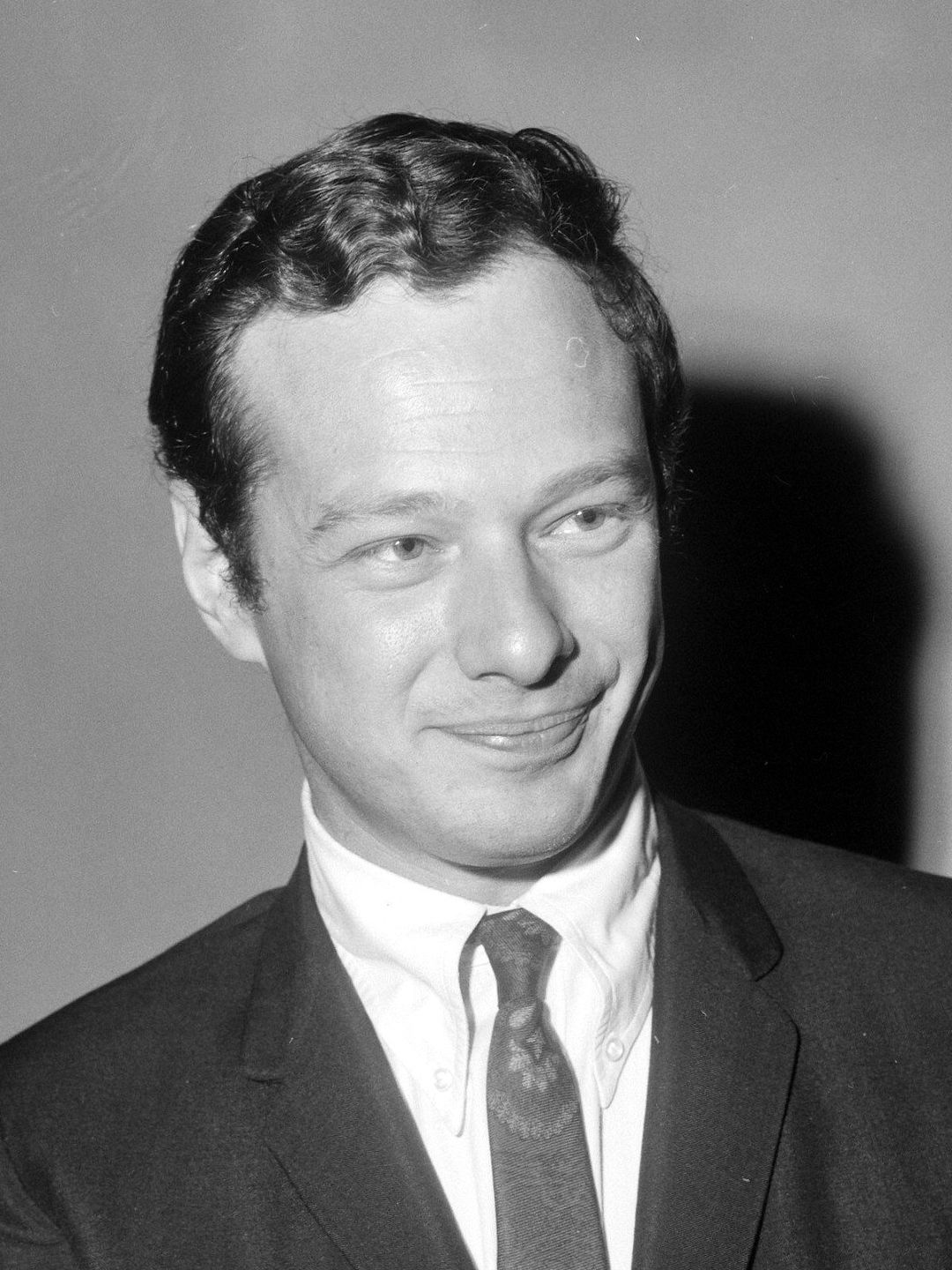 Although their reputation was enormous, it didn't make them jaded. “We'll never get to that stage of releasing rubbish because we know people will buy it,” Paul McCartney stated in 1965. With this credo in mind, The Beatles assembled in the recording studio in mid 1968 to record their next album not quite knowing which track would be used for their next single. Although their reputation was enormous, it didn't make them jaded. “We'll never get to that stage of releasing rubbish because we know people will buy it,” Paul McCartney stated in 1965. With this credo in mind, The Beatles assembled in the recording studio in mid 1968 to record their next album not quite knowing which track would be used for their next single.
Except for John Lennon, that is! He had his newly written song “Revolution” in mind. Since manager Brian Epstein, who highly discouraged his “boys” from expressing their political views, had passed away less than a year before, John felt pressed to let the world know how he felt about recent events in the world.
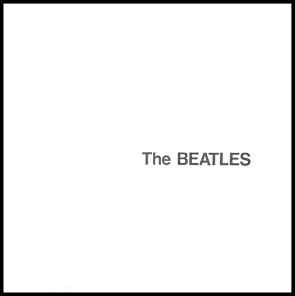 But did that settle the decision as to what the next single would be? John ran the group through extensive recording sessions to master what he felt was going to be their next worldwide hit but, being that The Beatles thought of themselves as a democratic unit, it could be vetoed. And it was. That early recording did get released on their November released album “The Beatles” (aka the “White Album”) under the title “Revolution 1,” but Paul in particular didn't think it was commercial enough to make the grade as their next single. Not taking this lying down, John persevered at getting his message out to the masses by reworking the song in a manner suitable to be accepted by his band as their potential next big hit. This reworking then became the highly acclaimed hit we all know as “Revolution.” But did that settle the decision as to what the next single would be? John ran the group through extensive recording sessions to master what he felt was going to be their next worldwide hit but, being that The Beatles thought of themselves as a democratic unit, it could be vetoed. And it was. That early recording did get released on their November released album “The Beatles” (aka the “White Album”) under the title “Revolution 1,” but Paul in particular didn't think it was commercial enough to make the grade as their next single. Not taking this lying down, John persevered at getting his message out to the masses by reworking the song in a manner suitable to be accepted by his band as their potential next big hit. This reworking then became the highly acclaimed hit we all know as “Revolution.”
Songwriting History
"I wanted to put out what I felt about revolution," John stated in 1970. "I thought it was about time we spoke about it, the same as I thought it was about time we stopped not answering about the Vietnamese war when we were on tour with Brian Epstein and had to tell him, 'We're going to talk about the war this time and we're not going to just waffle'...That's why I did it: I wanted to talk. I wanted to say my piece about revolutions. I wanted to tell you, or whoever listens, to communicate, to say, 'What do you say? This is what I say.'"
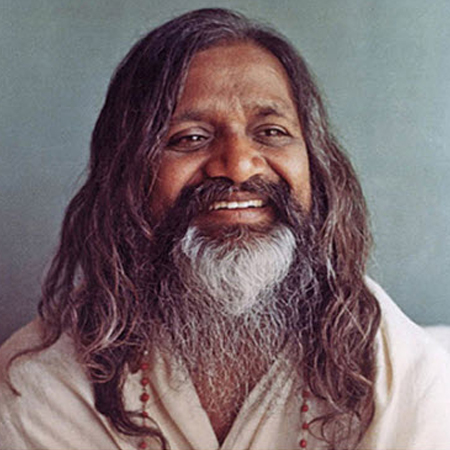 "I had been thinking about it up in the hills in India,” John continues. “I still had this 'God will save us' feeling about it: 'It's going to be all right.'” This indicates that at least the seed of the idea for the song began germinating while The Beatles were in India in the spring of 1968 studying Transcendental Meditation with the Maharishi. It has been stated that the protests that year in opposition to the Vietnam War, as well as other political issues, in America, Britain, France and Poland, steered Lennon away from the "summer of love" mentality of 1967 into a mindset of a need for political change. Most of the song was written as of May 28th, 1968, evidenced by a demo recording that was recorded on that day which included everything but the final verse with the "Chairman Mao" reference. John's 1972 interview for Hit Parader Magaine includes his statement that he "should never have put that in about Chairman Mao," adding, I was just finishing off in the studio when I did that." This indicates that the final verse was written at the time of their first official recording session for “Revolution 1” on May 30th, 1968. "I had been thinking about it up in the hills in India,” John continues. “I still had this 'God will save us' feeling about it: 'It's going to be all right.'” This indicates that at least the seed of the idea for the song began germinating while The Beatles were in India in the spring of 1968 studying Transcendental Meditation with the Maharishi. It has been stated that the protests that year in opposition to the Vietnam War, as well as other political issues, in America, Britain, France and Poland, steered Lennon away from the "summer of love" mentality of 1967 into a mindset of a need for political change. Most of the song was written as of May 28th, 1968, evidenced by a demo recording that was recorded on that day which included everything but the final verse with the "Chairman Mao" reference. John's 1972 interview for Hit Parader Magaine includes his statement that he "should never have put that in about Chairman Mao," adding, I was just finishing off in the studio when I did that." This indicates that the final verse was written at the time of their first official recording session for “Revolution 1” on May 30th, 1968.
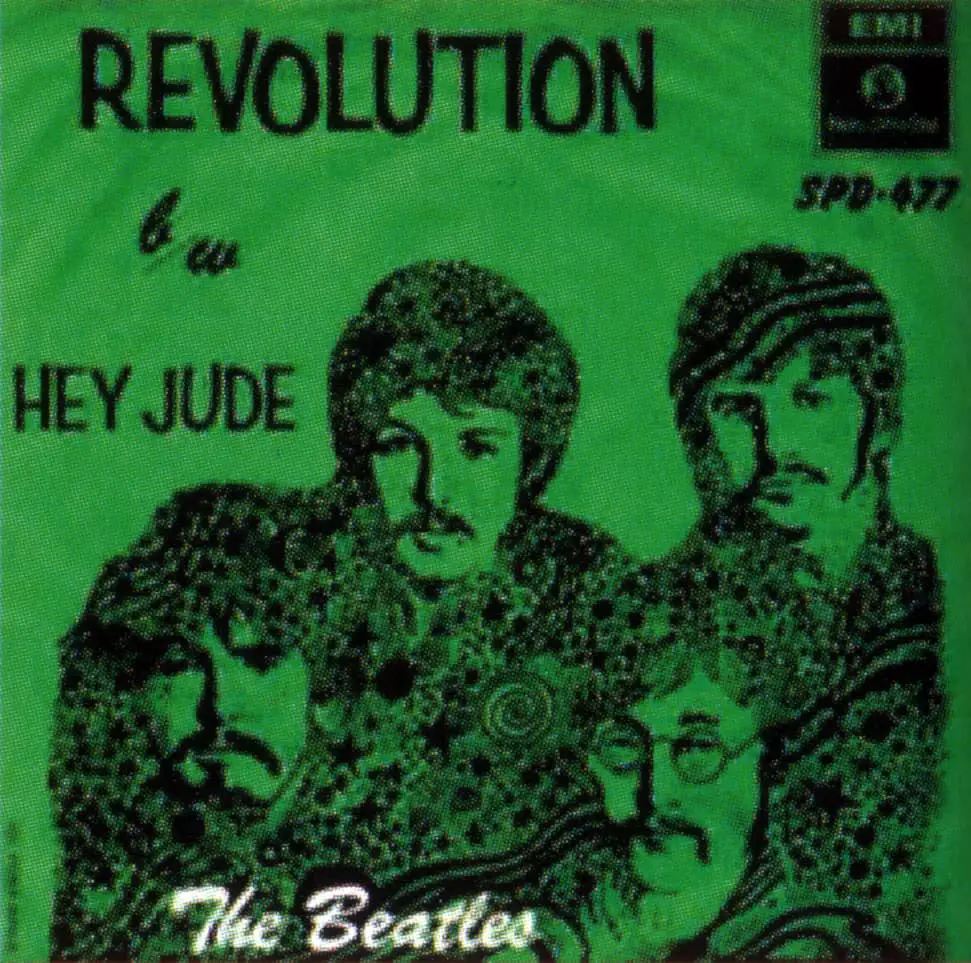 John has been very vocal throughout the remaining years of his life regarding the intentions behind the lyrics of the song. In 1968 he explained: “What I said in 'Revolution'...is 'change your head.' These people that are trying to change the world can't even get it all together. They're attacking and biting each other's faces, and all the time they're all pushing the same way. And if they keep going on like that it's going to kill it before it's even moved. It's silly to bitch about each other and be trivial. They've got to think in terms of at least the world or the universe, and stop thinking in terms of factories and one country.” John has been very vocal throughout the remaining years of his life regarding the intentions behind the lyrics of the song. In 1968 he explained: “What I said in 'Revolution'...is 'change your head.' These people that are trying to change the world can't even get it all together. They're attacking and biting each other's faces, and all the time they're all pushing the same way. And if they keep going on like that it's going to kill it before it's even moved. It's silly to bitch about each other and be trivial. They've got to think in terms of at least the world or the universe, and stop thinking in terms of factories and one country.”
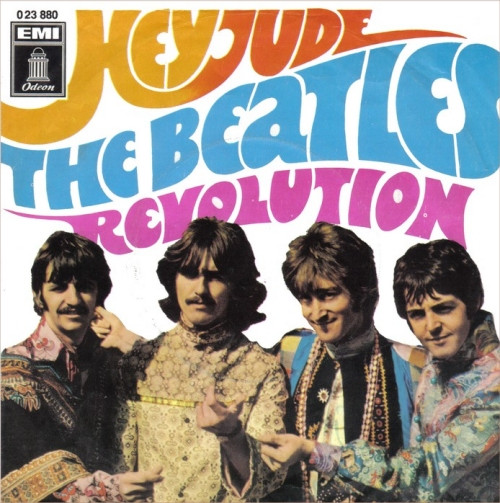 Continuing, he states: “The point is that the Establishment doesn't really exist, and if it does exist, it's old people. The only people that want to change it are young, and they're going to beat the Establishment. If they want to smash it all down, and have to be laborers as well to build it up again, then that's what they're going to get. If they'd just realize the Establishment can't last forever. The only reason it has lasted forever is that the only way people have ever tried to change it is by revolution. And the idea is just to move in on the scene, so they can take over the universities, do all the things that are practically feasible at the time. But not try and take over the state, or smash the state, or slow down the works. All they've got to do is get through and change it, because they will be it.” Continuing, he states: “The point is that the Establishment doesn't really exist, and if it does exist, it's old people. The only people that want to change it are young, and they're going to beat the Establishment. If they want to smash it all down, and have to be laborers as well to build it up again, then that's what they're going to get. If they'd just realize the Establishment can't last forever. The only reason it has lasted forever is that the only way people have ever tried to change it is by revolution. And the idea is just to move in on the scene, so they can take over the universities, do all the things that are practically feasible at the time. But not try and take over the state, or smash the state, or slow down the works. All they've got to do is get through and change it, because they will be it.”
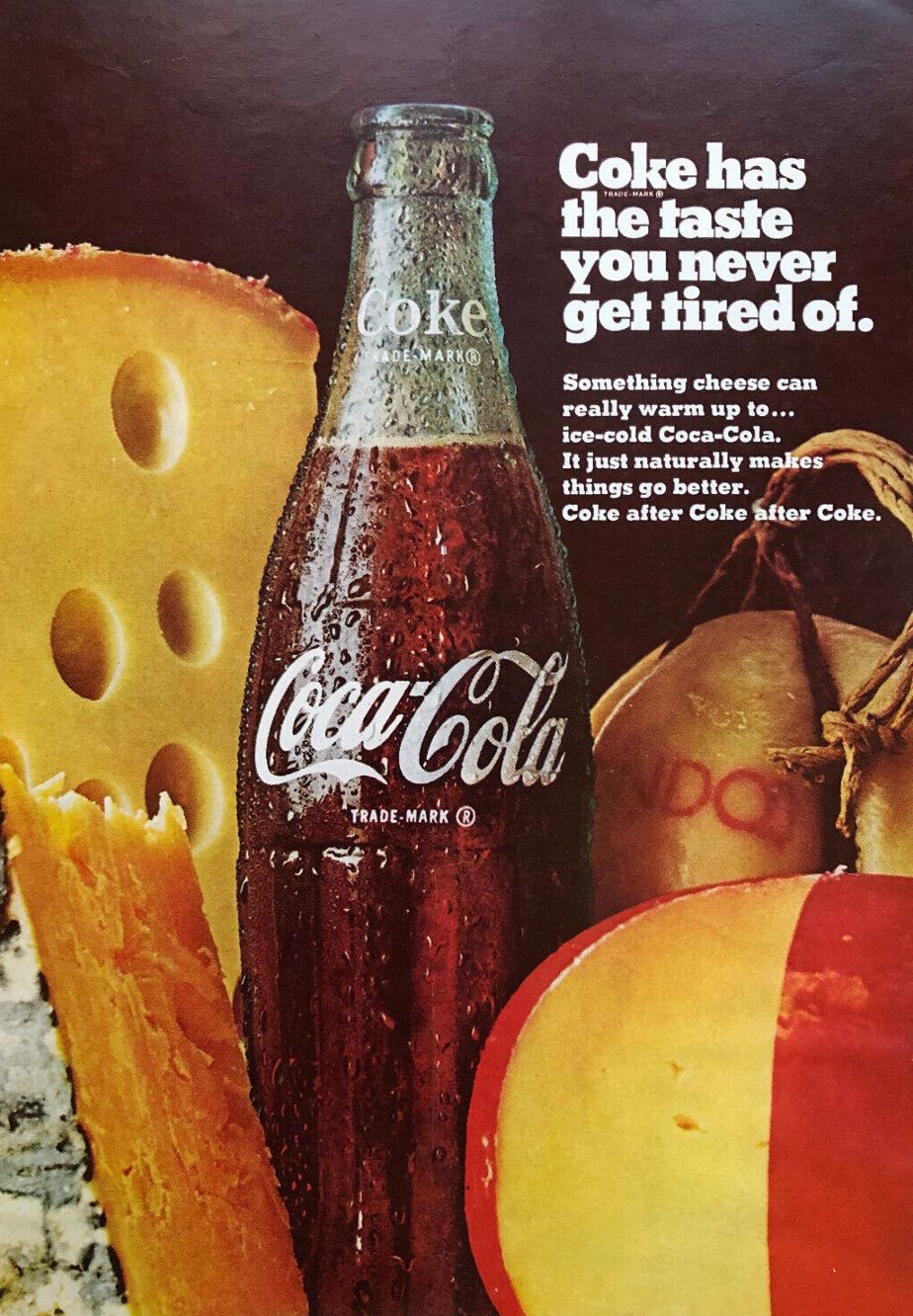 In 1969, he added: “The only way to ensure a lasting peace of any kind is to change people's minds. There's no other way. The Government can do it with propaganda. Coca-Cola can do it with propaganda – why can't we? We are the hip generation." In fact, the line, "you better free your mind instead," was a direct reflection of the Maharishi's teachings about transcendental meditation, the results of which have been proven to reduce crime in specific localities where TM has been focused. In 1969, he added: “The only way to ensure a lasting peace of any kind is to change people's minds. There's no other way. The Government can do it with propaganda. Coca-Cola can do it with propaganda – why can't we? We are the hip generation." In fact, the line, "you better free your mind instead," was a direct reflection of the Maharishi's teachings about transcendental meditation, the results of which have been proven to reduce crime in specific localities where TM has been focused.
In 1970, he elaborated: “If you want peace, you won't get it with violence. Please tell me one militant revolution that worked. Sure, a few of them took over, but what happened? Status quo. And if they smash it down, who do they think is going to build it up again? And then when they've built it up again, who do they think is going to run it? And how are they going to run it? They don't look further than their noses.”
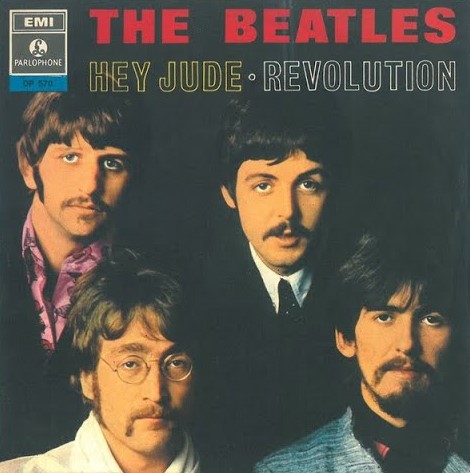 In 1971, he stated: “These left-wing people talk about giving the power to the people. That's nonsense – the people have the power. All we're trying to do is make people aware that they have the power themselves, and the violent way of revolution doesn't justify the ends. All we're trying to say to people is to expose politicians and expose the people themselves who are hypocritical and sitting back and saying, 'Oh, we can't do anything about it, it's up to somebody else. Give us the answer, John.' People have to organize. Students have to organize voting.” In 1971, he stated: “These left-wing people talk about giving the power to the people. That's nonsense – the people have the power. All we're trying to do is make people aware that they have the power themselves, and the violent way of revolution doesn't justify the ends. All we're trying to say to people is to expose politicians and expose the people themselves who are hypocritical and sitting back and saying, 'Oh, we can't do anything about it, it's up to somebody else. Give us the answer, John.' People have to organize. Students have to organize voting.”
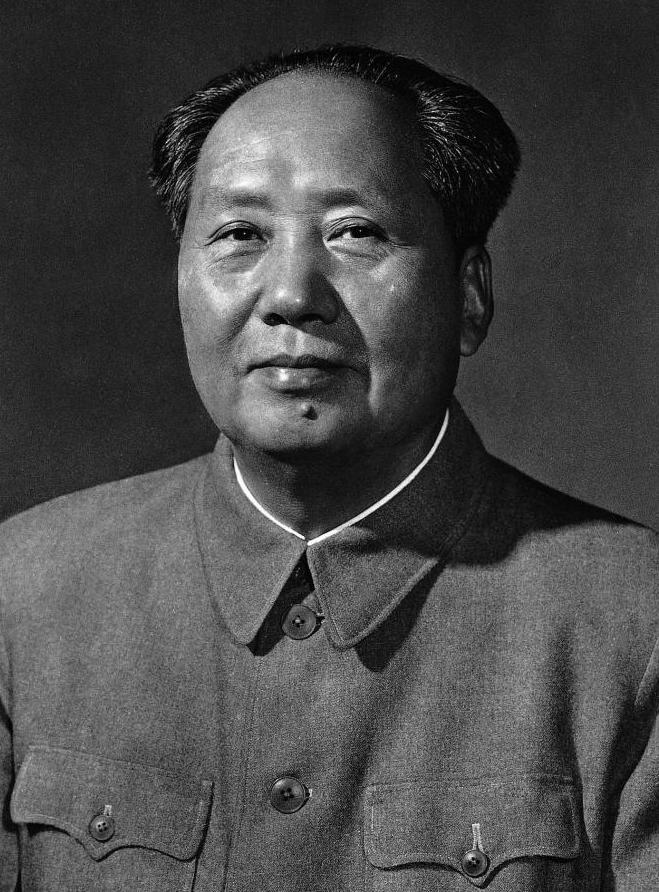 In his 1980 Playboy Magazine interview, John gives an overall perspective from twelve years later. “You look at the song and see my feelings about politics, radicalism and everything. I want to see the plan. Waving Chairman Mao badges or being a Marxist or a thisist or a thatist is going to get you shot, locked up. If that's what you want, you subconsciously want to be a martyr. You see, I want to know what you are going to do after you have knocked it all down. Can't we use some of it? If you want to change the system, change the system. Don't go shooting people.” In his 1980 Playboy Magazine interview, John gives an overall perspective from twelve years later. “You look at the song and see my feelings about politics, radicalism and everything. I want to see the plan. Waving Chairman Mao badges or being a Marxist or a thisist or a thatist is going to get you shot, locked up. If that's what you want, you subconsciously want to be a martyr. You see, I want to know what you are going to do after you have knocked it all down. Can't we use some of it? If you want to change the system, change the system. Don't go shooting people.”
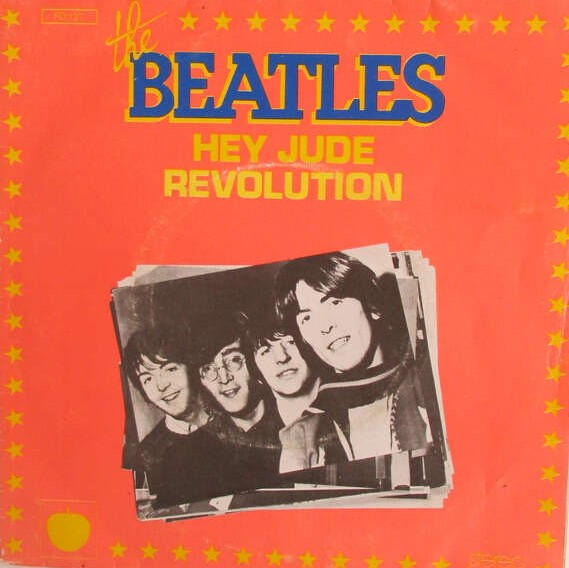 Lyrically, the most noticeable difference between the original “Revolution 1” and the re-recorded “Revolution” is the line concerning John's view on “destruction,” the later version stating “don't you know that you can count me out” and omitting the opposite sentiment “...in” as on the first version. In 1971, John explained this change: “The original version, which ended up on the LP, said 'Count me in,' too. I put in both because I wasn't sure. On the version released as a single, I said, 'When you talk about destruction, don't you know that you can count me out.' I didn't want to get killed. I didn't really know much about the Maoists, but I just knew that they seemed to be so few and yet they painted themselves green and stood in front of the police waiting to get picked off. I just thought it was unsubtle. I thought the original Communist revolutionaries coordinated themselves a bit better and didn't go around shouting about it.” Lyrically, the most noticeable difference between the original “Revolution 1” and the re-recorded “Revolution” is the line concerning John's view on “destruction,” the later version stating “don't you know that you can count me out” and omitting the opposite sentiment “...in” as on the first version. In 1971, John explained this change: “The original version, which ended up on the LP, said 'Count me in,' too. I put in both because I wasn't sure. On the version released as a single, I said, 'When you talk about destruction, don't you know that you can count me out.' I didn't want to get killed. I didn't really know much about the Maoists, but I just knew that they seemed to be so few and yet they painted themselves green and stood in front of the police waiting to get picked off. I just thought it was unsubtle. I thought the original Communist revolutionaries coordinated themselves a bit better and didn't go around shouting about it.”
 In his book “Many Years From Now,” Paul relates his thoughts on John's sentiment in “Revolution”: “It was a great song, basically John's...it was an overtly political song about revolution and a great one. I think John later ascribed more political intent to it than he actually felt when he wrote it.” In his book “Many Years From Now,” Paul relates his thoughts on John's sentiment in “Revolution”: “It was a great song, basically John's...it was an overtly political song about revolution and a great one. I think John later ascribed more political intent to it than he actually felt when he wrote it.”
Continuing, Paul writes: “They were very political times, obviously, with the Vietnam war going on, Chairman Mao and the Little Red Book, and all the demonstrations with people going through the streets shouting 'Ho, Ho Ho Chi Minh!' I think he wanted to say you can count me in for a revolution, but if you go carrying pictures of Chairman Mao 'you ain't gonna make it with anyone anyhow.' By saying that I think he meant we all want to change the world Maharishi-style, because 'Across The Universe' also had the change-the-world theme.”
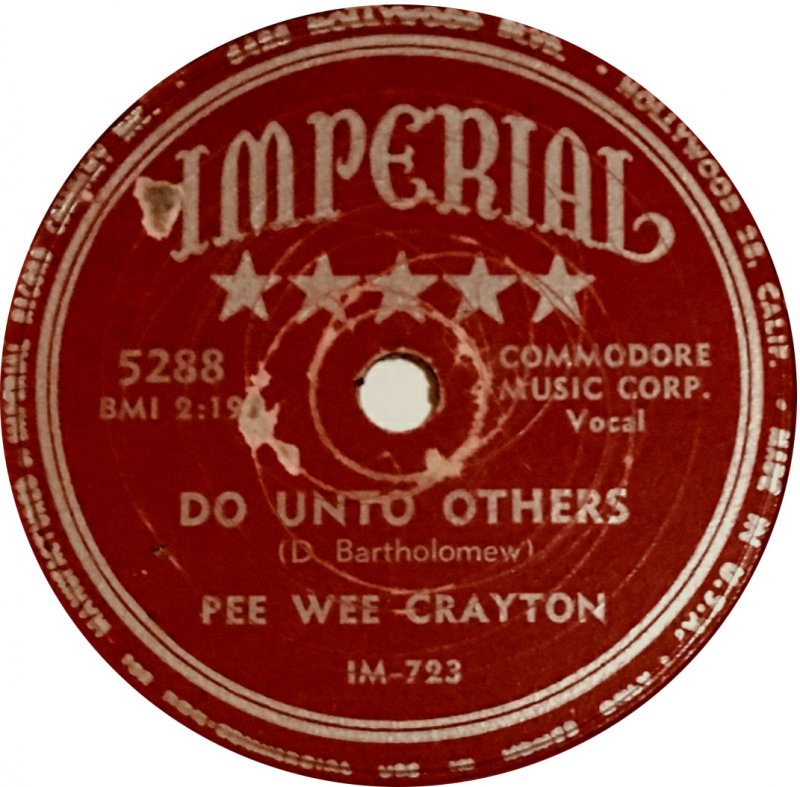 From Paul's above statement that the song was “basically John's” along with Lennon's 1980 interviews relating “the statement in 'Revolution' was mine” and “completely me,” we can easily deduce that Paul's input in the song's writing was very minimal at best. Musically, the introduction strikes a distinct similarity to Pee Wee Crayton's 1954 single "Do Unto Others," which can easily be thought to have been John's inspiration. From Paul's above statement that the song was “basically John's” along with Lennon's 1980 interviews relating “the statement in 'Revolution' was mine” and “completely me,” we can easily deduce that Paul's input in the song's writing was very minimal at best. Musically, the introduction strikes a distinct similarity to Pee Wee Crayton's 1954 single "Do Unto Others," which can easily be thought to have been John's inspiration.
Recording History
The first time "Revolution" was committed to tape was on May 28th, 1968 when The Beatles all met at George's 'Kinfauns' home in Esher, Surrey, to make demo recordings of songs they were going to include on their next album. These recordings were made on George's four-track Ampex tape recorder, the group taking turns acoustically playing their newly written songs and then performing various overdubs as ideas of what they would do officially when they got into EMI Studios.
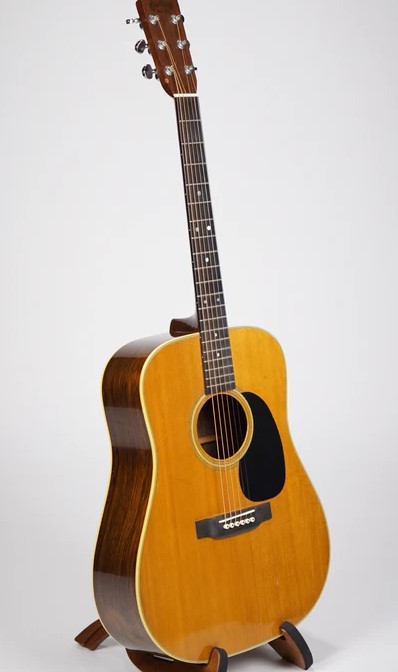 The demo recording of “Revolution” is very lighthearted and spirited, conveying the semi-political lyrics in a way that one could easily envision as their next single. John plays acoustic guitar and sings while the other Beatles clap along and occasionally join in on backing vocals with a great sense of harmony. John then double-tracks himself on acoustic guitar and vocals but, as the final verse begins to kick in, his timing gets noticeably off. This results in the overdubbed tambourine in this verse, probably played by Ringo, to compensate in order to catch the beat correctly. (This awkwardness is corrected on the 50th Anniversay "White Album" releases.) All in all, while containing flaws, this acoustic version is very impressive and paints a very accurate picture of how Lennon originally conceived of the song. The demo recording of “Revolution” is very lighthearted and spirited, conveying the semi-political lyrics in a way that one could easily envision as their next single. John plays acoustic guitar and sings while the other Beatles clap along and occasionally join in on backing vocals with a great sense of harmony. John then double-tracks himself on acoustic guitar and vocals but, as the final verse begins to kick in, his timing gets noticeably off. This results in the overdubbed tambourine in this verse, probably played by Ringo, to compensate in order to catch the beat correctly. (This awkwardness is corrected on the 50th Anniversay "White Album" releases.) All in all, while containing flaws, this acoustic version is very impressive and paints a very accurate picture of how Lennon originally conceived of the song.
The first song The Beatles took to recording during the extensive sessions for their new album, which became the “White Album,” was “Revolution.” Please refer to the “Revolution 1” page on this website for the detailed Recording History of that song.
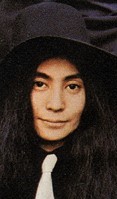 Regarding the need to re-record the song a second time, John explains: “When George and Paul and all of them were on holiday, I made 'Revolution' which is on the LP. I wanted to put it out as a single, but they said it wasn't good enough...We recorded the song twice. The Beatles were getting real tense with each other. The first take, George and Paul were resentful and said it wasn't fast enough. Now, if you go into the details of what a hit record is and isn't, maybe. But The Beatles could have afforded to put out the slow, understandable version of 'Revolution' as a single, whether it was a gold record or a wooden record. But, because they were so upset over the Yoko thing and the fact that I was again becoming as creative and dominating as I was in the early days, after lying fallow for a couple of years, it upset the applecart. I was awake again and they weren't used to it.” Regarding the need to re-record the song a second time, John explains: “When George and Paul and all of them were on holiday, I made 'Revolution' which is on the LP. I wanted to put it out as a single, but they said it wasn't good enough...We recorded the song twice. The Beatles were getting real tense with each other. The first take, George and Paul were resentful and said it wasn't fast enough. Now, if you go into the details of what a hit record is and isn't, maybe. But The Beatles could have afforded to put out the slow, understandable version of 'Revolution' as a single, whether it was a gold record or a wooden record. But, because they were so upset over the Yoko thing and the fact that I was again becoming as creative and dominating as I was in the early days, after lying fallow for a couple of years, it upset the applecart. I was awake again and they weren't used to it.”
 Engineer Geoff Emerick, in his book “Here, There And Everywhere,” details the disagreements about what would be their next single. “In the early days, George Martin had picked the songs that would comprise the a-side and b-side of a Beatles single. But by this point in their career, it would be the group's decision; George might offer some input or suggestions, but it was their final call. Apparently, John and Paul had been arguing for some time about what would be the next a-side. John was pushing hard for 'Revolution 1,' but Paul resisted, telling John he thought it was too slow; eventually he brought George Martin in as an ally. Personally, I think Paul felt that the song simply wasn't all that good, and he was using its slow tempo as an excuse not to have it released as a single, but John had defiantly taken him up on the challenge and so was insisting that they cut it again, faster.” Engineer Geoff Emerick, in his book “Here, There And Everywhere,” details the disagreements about what would be their next single. “In the early days, George Martin had picked the songs that would comprise the a-side and b-side of a Beatles single. But by this point in their career, it would be the group's decision; George might offer some input or suggestions, but it was their final call. Apparently, John and Paul had been arguing for some time about what would be the next a-side. John was pushing hard for 'Revolution 1,' but Paul resisted, telling John he thought it was too slow; eventually he brought George Martin in as an ally. Personally, I think Paul felt that the song simply wasn't all that good, and he was using its slow tempo as an excuse not to have it released as a single, but John had defiantly taken him up on the challenge and so was insisting that they cut it again, faster.”
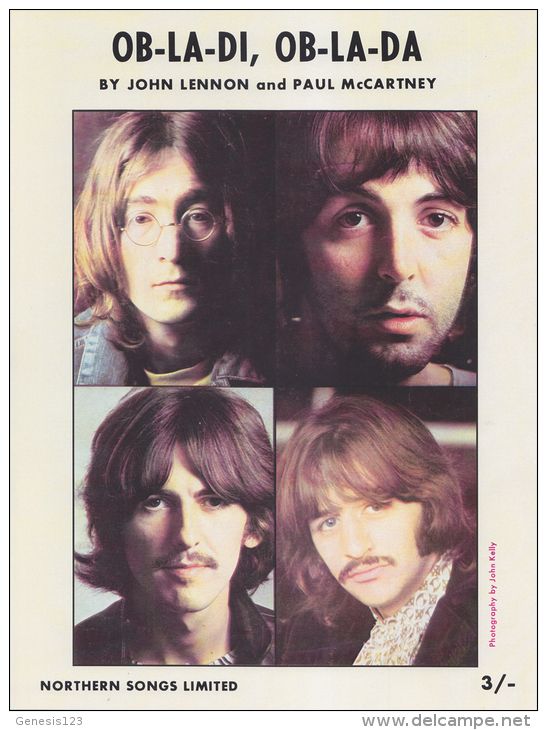 With this in mind, John ran them through a series of rehearsals for a more uptempo version of the song, designated as "Revolution (Remake)," in EMI Studio Three on July 9th, 1968 in the early morning hours after they continued their extensive work on Paul's “Ob-La-Di, Ob-La-Da.” This occured at approximately 1 am the following morning, The Beatles running through the song repeatedly, all of this being recorded with clean electric guitar minus any distortion. Common EMI practice at the time was to re-record over recorded material when it was decided that the contents of the tape were deemed unusable, as this was. However, six minutes of these rehearsals, which comprised John on electric guitar and vocals, Paul on bass and harmony vocals, George on electric guitar and Ringo on drums, were discovered at the end of a re-recorded reel of tape sometime in 2018 when mixing new material for the 50th Anniversary "White Album" releases. These six minutes reveal an interesting transition between the sessions that resulted in "Revolution 1" and the harder "Revolution" as released as the b-side of "Hey Jude" in August of 1968, George touching on elements of his future Beatles composition "Old Brown Shoe" in the process. The session on this day ended at 3:30 am that morning. With this in mind, John ran them through a series of rehearsals for a more uptempo version of the song, designated as "Revolution (Remake)," in EMI Studio Three on July 9th, 1968 in the early morning hours after they continued their extensive work on Paul's “Ob-La-Di, Ob-La-Da.” This occured at approximately 1 am the following morning, The Beatles running through the song repeatedly, all of this being recorded with clean electric guitar minus any distortion. Common EMI practice at the time was to re-record over recorded material when it was decided that the contents of the tape were deemed unusable, as this was. However, six minutes of these rehearsals, which comprised John on electric guitar and vocals, Paul on bass and harmony vocals, George on electric guitar and Ringo on drums, were discovered at the end of a re-recorded reel of tape sometime in 2018 when mixing new material for the 50th Anniversary "White Album" releases. These six minutes reveal an interesting transition between the sessions that resulted in "Revolution 1" and the harder "Revolution" as released as the b-side of "Hey Jude" in August of 1968, George touching on elements of his future Beatles composition "Old Brown Shoe" in the process. The session on this day ended at 3:30 am that morning.
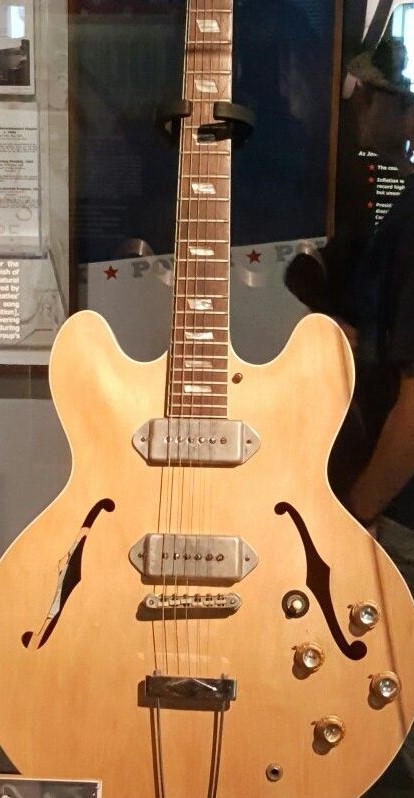 The brief snippet of this taped discovery that appears on the Super Deluxe 50th Anniversary release of the "White Album" shows that it was John who played lead guitar this time around. “On 'Revolution,' I'm playing the guitar,” he explained in interview at the time, "and I haven't improved since I was last playing. It sounds the way I wanted it to sound. It's a pity I can't do it better, the fingering, you know. But, I couldn't have done that last year; I would have been too paranoiac. I couldn't play. George must play, or somebody better. My playing has probably improved a little bit on this session because I've been playing a little. I was always the rhythm guitar anyway, but I always wanted to fiddle about in the background." "I watched his work on...'Revolution' and he was really going after it," James Taylor stated in his biography "Long Ago And Far Away," continuing, "His energy was very intense." The brief snippet of this taped discovery that appears on the Super Deluxe 50th Anniversary release of the "White Album" shows that it was John who played lead guitar this time around. “On 'Revolution,' I'm playing the guitar,” he explained in interview at the time, "and I haven't improved since I was last playing. It sounds the way I wanted it to sound. It's a pity I can't do it better, the fingering, you know. But, I couldn't have done that last year; I would have been too paranoiac. I couldn't play. George must play, or somebody better. My playing has probably improved a little bit on this session because I've been playing a little. I was always the rhythm guitar anyway, but I always wanted to fiddle about in the background." "I watched his work on...'Revolution' and he was really going after it," James Taylor stated in his biography "Long Ago And Far Away," continuing, "His energy was very intense."
 And how he wanted it was much different from the earlier version, as Geoff Emerick continues: “John wanted the second, up-tempo version of 'Revolution' to be even tougher and more biting than the first one. That was typical of him in those days; that was his vibe: pissed off. Ever since we'd first started work on the 'White Album,' John had wanted to play louder and louder – he kept winding his guitar amp full up, but there were acoustic limitations as to how loud you could play and still capture the sound before it turned into a mess, leaking onto everything else and becoming all muddy. He didn't understand that, no matter how many times I tried to explain it to him, so he just became more and more frustrated and angry. Making things worse was the fact that, behind the scenes, Magic Alex (Mardas) was telling him that he would be able to play as loud as he wanted, without restriction, in the new studio he was building for them.” And how he wanted it was much different from the earlier version, as Geoff Emerick continues: “John wanted the second, up-tempo version of 'Revolution' to be even tougher and more biting than the first one. That was typical of him in those days; that was his vibe: pissed off. Ever since we'd first started work on the 'White Album,' John had wanted to play louder and louder – he kept winding his guitar amp full up, but there were acoustic limitations as to how loud you could play and still capture the sound before it turned into a mess, leaking onto everything else and becoming all muddy. He didn't understand that, no matter how many times I tried to explain it to him, so he just became more and more frustrated and angry. Making things worse was the fact that, behind the scenes, Magic Alex (Mardas) was telling him that he would be able to play as loud as he wanted, without restriction, in the new studio he was building for them.”
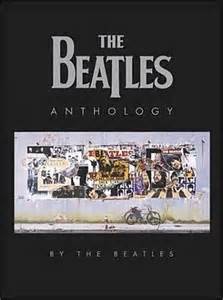 The following day (that is, later that evening), July 10th, 1968, The Beatles re-entered EMI Studio Three at around 7 pm to officially start recording the newer, faster version of “Revolution.” After the session tape from the previous day's rehearsal tape was rewound, the rhythm track was recorded on top of it first, this time consisting of John and George's electric guitars recorded on tracks one and two of the four-track tape, and Ringo's drums recorded on track three. “We got into distortion on that,” George Martin explains in the “Anthology” book, “which we had a lot of complaints from the technical people about. But that was the idea: it was John's song and the idea was to push it right to the limit. Well, we went to the limit and beyond.” The following day (that is, later that evening), July 10th, 1968, The Beatles re-entered EMI Studio Three at around 7 pm to officially start recording the newer, faster version of “Revolution.” After the session tape from the previous day's rehearsal tape was rewound, the rhythm track was recorded on top of it first, this time consisting of John and George's electric guitars recorded on tracks one and two of the four-track tape, and Ringo's drums recorded on track three. “We got into distortion on that,” George Martin explains in the “Anthology” book, “which we had a lot of complaints from the technical people about. But that was the idea: it was John's song and the idea was to push it right to the limit. Well, we went to the limit and beyond.”
 Tape operator Phil McDonald remembers how the guitar distortion was achieved. “John wanted that sound, a really distorted sound. The guitars were put through the recording console, which was technically not the thing to do. It completely overloaded the channel and produced the fuzz sound. Fortunately the technical people didn't find out. They didn't approve of 'abuse of equipment.'" Kevin Howlett, in the "Track By Track" section of the Super Deluxe 50th Anniversay "White Album" book, describes this distortion effect as being achieved by plugging the guitars "straight into the mixing desk using DIT (Direct Injection Transformer) boxes. The overloaded mic amps in the desk produced a particulary abrasive form of distortion." Tape operator Phil McDonald remembers how the guitar distortion was achieved. “John wanted that sound, a really distorted sound. The guitars were put through the recording console, which was technically not the thing to do. It completely overloaded the channel and produced the fuzz sound. Fortunately the technical people didn't find out. They didn't approve of 'abuse of equipment.'" Kevin Howlett, in the "Track By Track" section of the Super Deluxe 50th Anniversay "White Album" book, describes this distortion effect as being achieved by plugging the guitars "straight into the mixing desk using DIT (Direct Injection Transformer) boxes. The overloaded mic amps in the desk produced a particulary abrasive form of distortion."
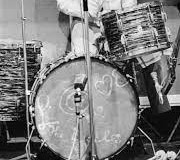 Ten takes of the rhythm track were recorded on this day, one of which being included in the Super Deluxe 50th Anniversary "White Album" box set, apparently mislabeled as "take 14 - instrumental backing track" because of obvious differences between it and "take 10," which has been documented as the keeper. Then, onto track four, was overdubbed handclaps and added snare drum beats from Ringo which, according to Mark Lewisohn's book “The Beatles Recording Sessions,” was “very heavy...compressed and limited and generally squashed to sound hard and uncompromising.” All four tracks of the tape were full at this point so three attempts at a reduction mix were made, placing both guitars onto track one and all drums and handclaps onto track two, this reduction mix taking the song to "take 13." Onto this John concentrated on overdubbing his lead vocals onto track three, then manually double-tracking the odd word here and there for emphasis on track four, obvious flubs being detected on the released recording. This second vocal overdub also included the blood-curdling scream during the song's introduction. This filled up the four-track tape once again, so two more attempts were made at a tape reduction, this taking the song to "take 15" with apparently both guitars on track one, all drums and percussion on track two, and both of John's vocals on track four. Rough mono mixes were then made for John to take home. This session was complete at 1:30 am the following morning. Ten takes of the rhythm track were recorded on this day, one of which being included in the Super Deluxe 50th Anniversary "White Album" box set, apparently mislabeled as "take 14 - instrumental backing track" because of obvious differences between it and "take 10," which has been documented as the keeper. Then, onto track four, was overdubbed handclaps and added snare drum beats from Ringo which, according to Mark Lewisohn's book “The Beatles Recording Sessions,” was “very heavy...compressed and limited and generally squashed to sound hard and uncompromising.” All four tracks of the tape were full at this point so three attempts at a reduction mix were made, placing both guitars onto track one and all drums and handclaps onto track two, this reduction mix taking the song to "take 13." Onto this John concentrated on overdubbing his lead vocals onto track three, then manually double-tracking the odd word here and there for emphasis on track four, obvious flubs being detected on the released recording. This second vocal overdub also included the blood-curdling scream during the song's introduction. This filled up the four-track tape once again, so two more attempts were made at a tape reduction, this taking the song to "take 15" with apparently both guitars on track one, all drums and percussion on track two, and both of John's vocals on track four. Rough mono mixes were then made for John to take home. This session was complete at 1:30 am the following morning.
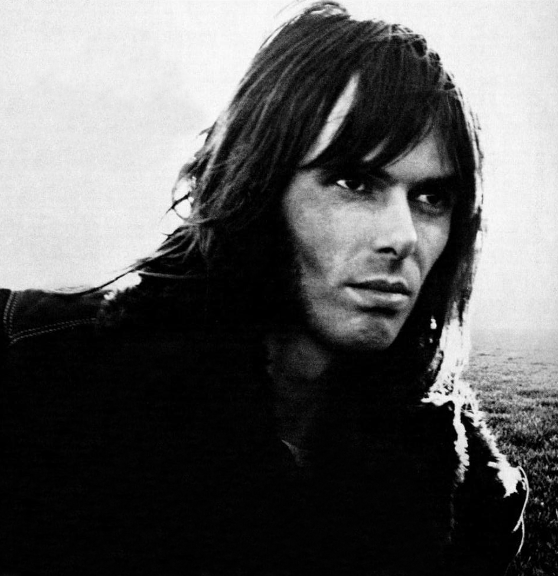 Later that day, July 11th, 1968, The Beatles returned to EMI Studio Three for two recording sessions, the first three hour session used exclusively for an overdub on “Revolution.” This session started at 4 pm and lasted until 7 pm, the only thing accomplished here being an electric piano overdub during strategic parts of the song. This electric piano was surprisingly not played by any of The Beatles but by studio musician Nicky Hopkins, who was an in-demand session player who had recently been featured prominently on The Rolling Stones' 1967 hit “She's A Rainbow.” He got on well with George, Paul and Ringo on their June 25th recording session for George's song "Sour Milk Sea" for Apple artist Jackie Lomax, so he was thought of to contribute to this Beatles song as well. Nicky Hopkins' relationship with The Beatles continued afterwards with his contributions to various solo albums by John, George and Ringo in the '70s. Later that day, July 11th, 1968, The Beatles returned to EMI Studio Three for two recording sessions, the first three hour session used exclusively for an overdub on “Revolution.” This session started at 4 pm and lasted until 7 pm, the only thing accomplished here being an electric piano overdub during strategic parts of the song. This electric piano was surprisingly not played by any of The Beatles but by studio musician Nicky Hopkins, who was an in-demand session player who had recently been featured prominently on The Rolling Stones' 1967 hit “She's A Rainbow.” He got on well with George, Paul and Ringo on their June 25th recording session for George's song "Sour Milk Sea" for Apple artist Jackie Lomax, so he was thought of to contribute to this Beatles song as well. Nicky Hopkins' relationship with The Beatles continued afterwards with his contributions to various solo albums by John, George and Ringo in the '70s.
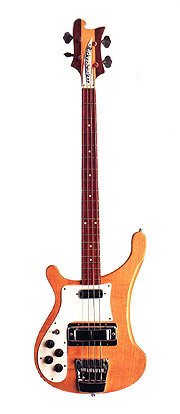 The second session in EMI Studio Three on this day started immediately afterwards, running from 7 pm to 3:45 am the following morning, the change in sessions probably due to the switching of 2nd engineers from Richard Lush to Phil McDonald. While most of this session was used for work on Paul's “Ob-La-Di, Ob-La-Da,” a further tape reduction of “Revolution” was made in order to open up yet more tracks for overdubbing, "take 15" becoming "take 16." on a song that was now documented as "Revolution No. 2." Onto this, Paul recorded his first bass guitar part for the song onto open track four. The second session in EMI Studio Three on this day started immediately afterwards, running from 7 pm to 3:45 am the following morning, the change in sessions probably due to the switching of 2nd engineers from Richard Lush to Phil McDonald. While most of this session was used for work on Paul's “Ob-La-Di, Ob-La-Da,” a further tape reduction of “Revolution” was made in order to open up yet more tracks for overdubbing, "take 15" becoming "take 16." on a song that was now documented as "Revolution No. 2." Onto this, Paul recorded his first bass guitar part for the song onto open track four.
One more session was determined to be necessary to complete this new version of “Revolution,” this session held in the now vacant EMI Studio Two beginning at midnight, July 13th, 1968, after an hour break following an eight hour session on the evening of the previous day.
 Geoff Emerick recalls the frustration of recording this song which came to a head on this day. “All that week...John had been exceptionally moody. 'No, no, I want that guitar to sound dirtier!' he kept demanding of me, often without even giving me a moment's space to try something out. By the end of the week, it was really starting to get to me. Fridays were usually a little more tolerable than the other nights, because I at least had the weekend to look forward to – two days away from the nastiness in the studio. But on this evening, Lennon arrived at the studio looking ready to chew someone's head off, and I was the nearest target.” Geoff Emerick recalls the frustration of recording this song which came to a head on this day. “All that week...John had been exceptionally moody. 'No, no, I want that guitar to sound dirtier!' he kept demanding of me, often without even giving me a moment's space to try something out. By the end of the week, it was really starting to get to me. Fridays were usually a little more tolerable than the other nights, because I at least had the weekend to look forward to – two days away from the nastiness in the studio. But on this evening, Lennon arrived at the studio looking ready to chew someone's head off, and I was the nearest target.”
 “'Haven't you sorted out that bloody guitar sound yet, Geoff?' he asked me almost as soon as he walked in the door. Actually, I had an idea I wanted to try – one that I thought might satisfy John, even though it was equipment abuse of the most severe kind. Because no amount of mic preamp overload had been good enough for him, I decided to try to overload two of them patched together, one into the other. As I knelt down beside the console, turning knobs that I was expressly forbidden from touching because they could literally cause the console to overheat and blow up, I couldn't help but think: 'If I was the studio manager and saw this going on, I'd fire myself.' The ironic thing was that, years later, this ended up being precisely the guitar sound every grunge band in the world aspired to.” “'Haven't you sorted out that bloody guitar sound yet, Geoff?' he asked me almost as soon as he walked in the door. Actually, I had an idea I wanted to try – one that I thought might satisfy John, even though it was equipment abuse of the most severe kind. Because no amount of mic preamp overload had been good enough for him, I decided to try to overload two of them patched together, one into the other. As I knelt down beside the console, turning knobs that I was expressly forbidden from touching because they could literally cause the console to overheat and blow up, I couldn't help but think: 'If I was the studio manager and saw this going on, I'd fire myself.' The ironic thing was that, years later, this ended up being precisely the guitar sound every grunge band in the world aspired to.”
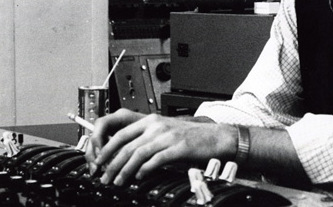 “Lennon stood over me as I knelt there, a relentless taskmaster hammering his guitar harder and harder as I delicately moved the knobs, trying to come up with the maximum amount of overload the board could take without bursting into flames. Suddenly he ran out of patience and growled, 'You know, three months in the army would have done you good.' The nasty remark implied that I was just some kind of upper-class twit who had never been exposed to the real world...I somehow managed to keep my cool and finish the session.” “Lennon stood over me as I knelt there, a relentless taskmaster hammering his guitar harder and harder as I delicately moved the knobs, trying to come up with the maximum amount of overload the board could take without bursting into flames. Suddenly he ran out of patience and growled, 'You know, three months in the army would have done you good.' The nasty remark implied that I was just some kind of upper-class twit who had never been exposed to the real world...I somehow managed to keep my cool and finish the session.”
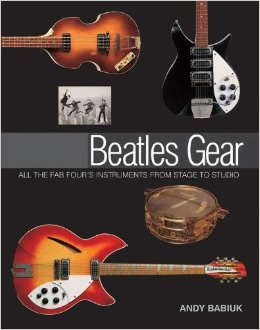 While, as Geoff Emerick mentioned above, the highly distorted guitar sound heard on “Revolution” became the touchstone for various genres of rock and roll throughout the decades, it was very startling for 1968. "You had a full spectrum of frequencies distorted," Geoff Emerick explained in Andy Babiuk's book "Beatles Gear," adding, "Today, you'd just have 5kHz distorting, or maybe 60Hz distorting." Even George Harrison, when interviewed for the book “Beatles Anthology,” states: “The thing about 'Revolution' (and you could get into a debate about this), is that it's not so much the song but the attitude in which it was done. I think 'Revolution' is pretty good and it grooves along, but I don't particularly like the noise that it makes; and I say 'noise' because I didn't like the distorted sound of John's guitar.” While, as Geoff Emerick mentioned above, the highly distorted guitar sound heard on “Revolution” became the touchstone for various genres of rock and roll throughout the decades, it was very startling for 1968. "You had a full spectrum of frequencies distorted," Geoff Emerick explained in Andy Babiuk's book "Beatles Gear," adding, "Today, you'd just have 5kHz distorting, or maybe 60Hz distorting." Even George Harrison, when interviewed for the book “Beatles Anthology,” states: “The thing about 'Revolution' (and you could get into a debate about this), is that it's not so much the song but the attitude in which it was done. I think 'Revolution' is pretty good and it grooves along, but I don't particularly like the noise that it makes; and I say 'noise' because I didn't like the distorted sound of John's guitar.”
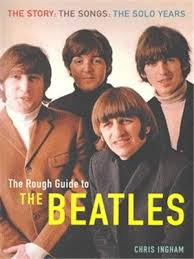 Paul countered with “I liked the sound on 'Revolution,'" but many in the record-buying public thought differently. Chris Ingham's book “The Rough Guide To The Beatles” relates that “the track's brutally over-driven guitars caused many a 'Hey Jude' lover to attempt to return the record, imagining there was something wrong with the b-side. Harassed record department assistants were heard explaining, 'it's called distortion, apparently. It's meant to sound like that.'" Since the sound level in the second half of "Hey Jude" needed to be lower because of it being such a long song contained on a seven-inch disc, it habitually startled many record owners when they simply turned the record over to play the b-side. This, of course, is what John intended. Paul countered with “I liked the sound on 'Revolution,'" but many in the record-buying public thought differently. Chris Ingham's book “The Rough Guide To The Beatles” relates that “the track's brutally over-driven guitars caused many a 'Hey Jude' lover to attempt to return the record, imagining there was something wrong with the b-side. Harassed record department assistants were heard explaining, 'it's called distortion, apparently. It's meant to sound like that.'" Since the sound level in the second half of "Hey Jude" needed to be lower because of it being such a long song contained on a seven-inch disc, it habitually startled many record owners when they simply turned the record over to play the b-side. This, of course, is what John intended.
 After John recorded another distorted guitar part, Paul superimposed another bass guitar part. The end result of the final master tape comprised John and George's original distorted electric guitars on track one, all drums and handclaps on track two, Nicky Hopkins playing electric piano, two lead vocals and John's final electric guitar on track three, and Paul's bass on track four. Four attempts at a mono mix were then made by George Martin, Geoff Emerick and Richard Lush, documented as 'remixes 10 through 13,' and the session was over by 4 am. After John recorded another distorted guitar part, Paul superimposed another bass guitar part. The end result of the final master tape comprised John and George's original distorted electric guitars on track one, all drums and handclaps on track two, Nicky Hopkins playing electric piano, two lead vocals and John's final electric guitar on track three, and Paul's bass on track four. Four attempts at a mono mix were then made by George Martin, Geoff Emerick and Richard Lush, documented as 'remixes 10 through 13,' and the session was over by 4 am.
 John took one of these mono mixes home to review over the weekend and determined that the mix could be improved upon. Therefore, on July 15th, 1968, the first order of business in EMI Studio Two at 3:30 pm was to create a new mono mix for “Revolution.” The same engineering team of George Martin, Geoff Emerick and Richard Lush gave it two more tries, indicating them as 'remixes 20 and 21' for some reason, the final mix being deemed worthy of The Beatles' next single. John took one of these mono mixes home to review over the weekend and determined that the mix could be improved upon. Therefore, on July 15th, 1968, the first order of business in EMI Studio Two at 3:30 pm was to create a new mono mix for “Revolution.” The same engineering team of George Martin, Geoff Emerick and Richard Lush gave it two more tries, indicating them as 'remixes 20 and 21' for some reason, the final mix being deemed worthy of The Beatles' next single.
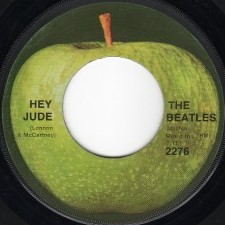 Or was it? Two weeks later, Paul brought a song into the recording studio that he felt was more suited for the next Beatles single, and everyone agreed it was better. “We put out 'Hey Jude,' which was worthy – but we could have had both,” Lennon remarked in 1970, eventually admitting in 1980 that it was “one of his masterpieces.” John relinquished the a-side of the next single to Paul's “Hey Jude” but did end up striking a startling note with the general public with “Revolution” as its b-side. Or was it? Two weeks later, Paul brought a song into the recording studio that he felt was more suited for the next Beatles single, and everyone agreed it was better. “We put out 'Hey Jude,' which was worthy – but we could have had both,” Lennon remarked in 1970, eventually admitting in 1980 that it was “one of his masterpieces.” John relinquished the a-side of the next single to Paul's “Hey Jude” but did end up striking a startling note with the general public with “Revolution” as its b-side.
On August 8th, 1968, George Martin made a tape copy of 'mono remix 21' in the control room of EMI Studio Two, which he indicated as "number 5," to review in preparation for the upcoming single release along with the recently created mono mix for “Hey Jude.”
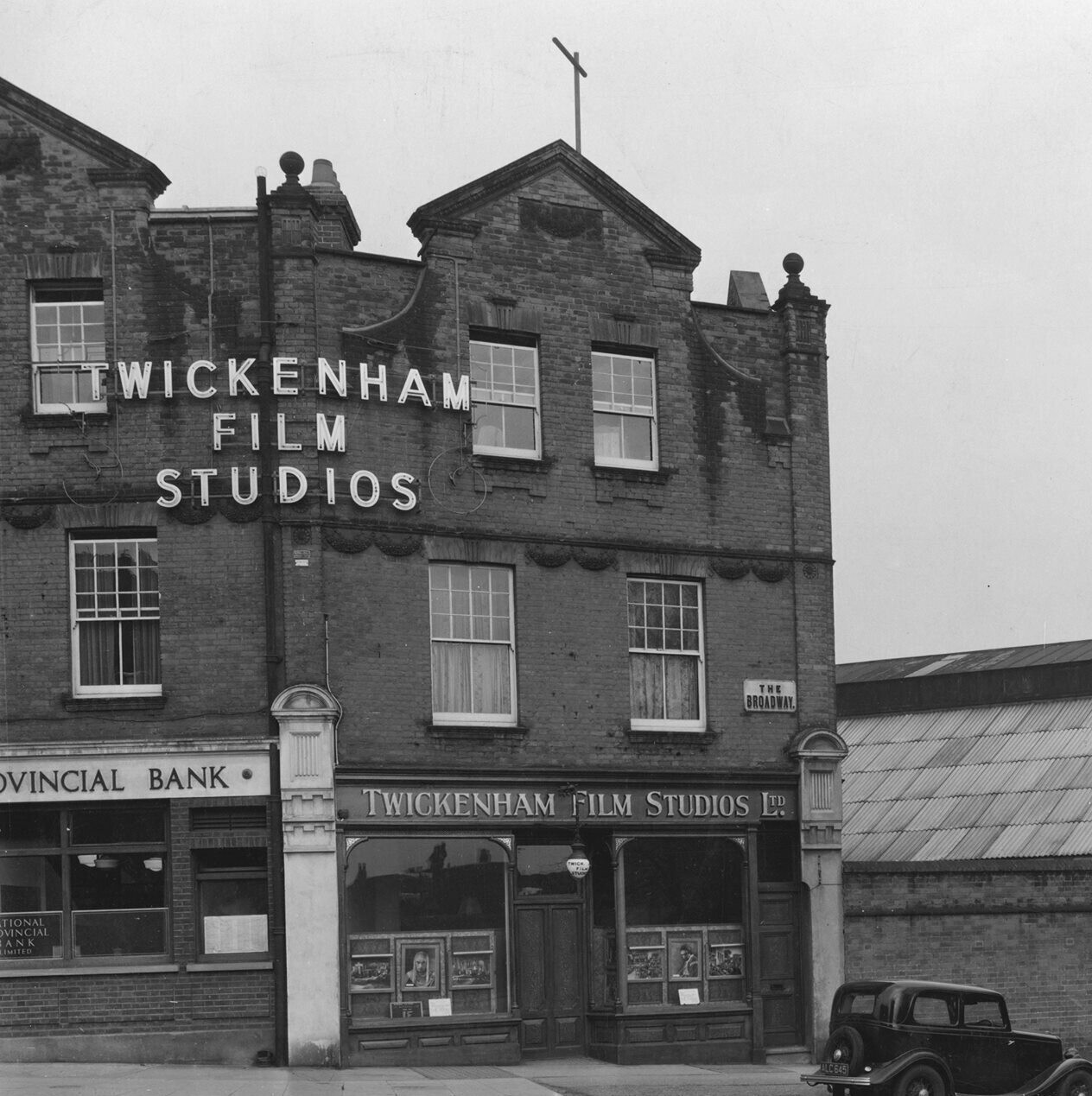 George Martin saw fit to make yet another tape copy of "Revolution" on September 3rd, 1968 in the control room of EMI Studio Two but for an entirely different purpose. The Beatles were to mime to this recording for a promotional film for television and, in order to escape the British Musicians' Union ban on miming, needed to sing live for the clip. The tape copy made on this day was instrumental only, mixing out all vocals for use the following day at Twickenham Film Studios. George Martin saw fit to make yet another tape copy of "Revolution" on September 3rd, 1968 in the control room of EMI Studio Two but for an entirely different purpose. The Beatles were to mime to this recording for a promotional film for television and, in order to escape the British Musicians' Union ban on miming, needed to sing live for the clip. The tape copy made on this day was instrumental only, mixing out all vocals for use the following day at Twickenham Film Studios.
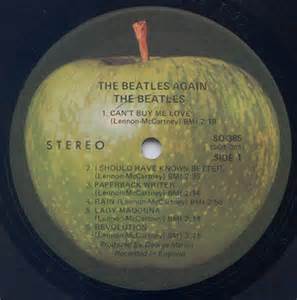 Since “Revolution” was only intended to be released as a single, no stereo version of the song was created in 1968, mono being the format used for all singles at that time. The first stereo mix for the song was made on December 5th, 1969 in preparation for the soon-to-be-released American album “Hey Jude” (aka “The Beatles Again”). This single attempt at a stereo mix was made in EMI Studios Room 4 by George Martin, Geoff Emerick, Phil McDonald and Neil Richmond. The startling left / right separation on this mix is quite jarring, diluting the impact of the overall sound on the superior mono mix. In 1974, Lennon expressed his dissatisfaction with this stereo mix by saying that "they took a heavy record and turned it into a piece of ice cream!" John's distorted guitar work is also quite softer in the mix, which is somewhat disappointing. Since “Revolution” was only intended to be released as a single, no stereo version of the song was created in 1968, mono being the format used for all singles at that time. The first stereo mix for the song was made on December 5th, 1969 in preparation for the soon-to-be-released American album “Hey Jude” (aka “The Beatles Again”). This single attempt at a stereo mix was made in EMI Studios Room 4 by George Martin, Geoff Emerick, Phil McDonald and Neil Richmond. The startling left / right separation on this mix is quite jarring, diluting the impact of the overall sound on the superior mono mix. In 1974, Lennon expressed his dissatisfaction with this stereo mix by saying that "they took a heavy record and turned it into a piece of ice cream!" John's distorted guitar work is also quite softer in the mix, which is somewhat disappointing.
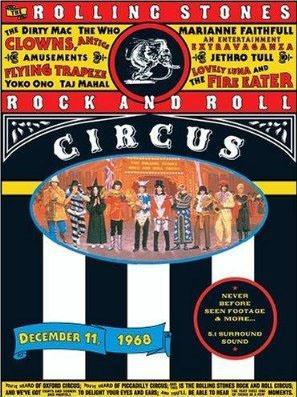 On December 11th, 1968, John Lennon rehearsed the fast version of "Revolution" for a film called “The Rolling Stones Rock And Roll Circus.” This proposed film included performances by The Rolling Stones, The Who, Jethro Tull, Taj Mahal, Marrianne Faithfull, and a quickly assembled “supergroup” called The Dirty Mac which consisted of John Lennon and Eric Clapton on guitar, Keith Richards on bass and Mitch Mitchell (of the Jimi Hendrix Experience) on drums. The Dirty Mac decided to drop "Revolution" in favor of "Yer Blues," which was recorded and filmed in front of the studio audience, their rehearsal of "Revolution" being recorded as well and eventually released in 2019 (as detailed below in "American Releases"). On December 11th, 1968, John Lennon rehearsed the fast version of "Revolution" for a film called “The Rolling Stones Rock And Roll Circus.” This proposed film included performances by The Rolling Stones, The Who, Jethro Tull, Taj Mahal, Marrianne Faithfull, and a quickly assembled “supergroup” called The Dirty Mac which consisted of John Lennon and Eric Clapton on guitar, Keith Richards on bass and Mitch Mitchell (of the Jimi Hendrix Experience) on drums. The Dirty Mac decided to drop "Revolution" in favor of "Yer Blues," which was recorded and filmed in front of the studio audience, their rehearsal of "Revolution" being recorded as well and eventually released in 2019 (as detailed below in "American Releases").
The Beatles did perform two impromptu renditions of "Revolution" during the filmed and taped rehearsals for what became the "Let It Be" movie. While they were rehearsing new material at Twickenham Film Studios in January of 1969, they touched on the song on both January 2nd and 7th, neither of which have been officially released in any way.
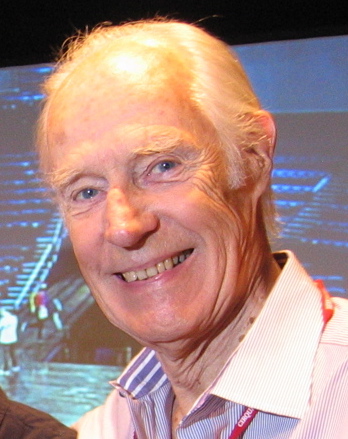 Meanwhile, the officially released stereo mix of "Revolution" was improved upon sometime between 2004 and 2006 when George Martin and his son Giles Martin returned to the master tape to create a new stereo version of the song for use in the Cirque du Soliel production “Love.” This superior stereo version is included on the resulting compact disc album of the same name in a truncated form, although the entire stereo mix they made at this time is available on the DVD and iTunes version of the album. Meanwhile, the officially released stereo mix of "Revolution" was improved upon sometime between 2004 and 2006 when George Martin and his son Giles Martin returned to the master tape to create a new stereo version of the song for use in the Cirque du Soliel production “Love.” This superior stereo version is included on the resulting compact disc album of the same name in a truncated form, although the entire stereo mix they made at this time is available on the DVD and iTunes version of the album.
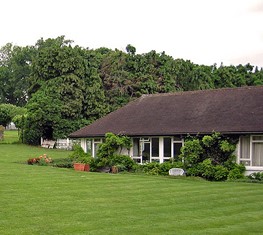 Sometime in 2018, Giles Martin, along with engineer Sam Okell, took to creating stereo mixes of both the newly discovered studio rehearsal of the song on July 9th, 1968 and one of the instrumental takes recorded on July 10th of that year, for inclusion on the Super Deluxe 50th Anniversary edition of the "White Album" as released in 2018. The original Esher demo of the song recorded by The Beatles at George's "Kinfauns" home on May 28th, 1968 (as detailed above) was also mixed during this time and was included on various 50th Anniversary editions of the "White Album." Sometime in 2018, Giles Martin, along with engineer Sam Okell, took to creating stereo mixes of both the newly discovered studio rehearsal of the song on July 9th, 1968 and one of the instrumental takes recorded on July 10th of that year, for inclusion on the Super Deluxe 50th Anniversary edition of the "White Album" as released in 2018. The original Esher demo of the song recorded by The Beatles at George's "Kinfauns" home on May 28th, 1968 (as detailed above) was also mixed during this time and was included on various 50th Anniversary editions of the "White Album."
 Giles Martin was then given the task in 2023 of creating a "demix remix" of "Revolution" for inclusion on the 50th Anniversary edition of the compilation album "The Beatles / 1967 - 1970" (aka "The Blue Album"). With Peter Jackson's AI technology at his disposal, Giles Martin was able to utilize this "new machine-learning techology" so that "individual elements that were put to tape...and were therefore impossible to separate" could be "untangled, allowing Giles to put the original recordings back together with even greater clarity and impact," as stated by John Harris in the liner notes of the above mentioned album. This is arguably the most vibrant and satisfying stereo version of the song to date, Giles Martin keeping the elements quite similarly panned as they were back in 1969 but delivered with much more punch. We can be quite sure John would have been more pleased with this than the previous "ice cream" mix! Giles Martin was then given the task in 2023 of creating a "demix remix" of "Revolution" for inclusion on the 50th Anniversary edition of the compilation album "The Beatles / 1967 - 1970" (aka "The Blue Album"). With Peter Jackson's AI technology at his disposal, Giles Martin was able to utilize this "new machine-learning techology" so that "individual elements that were put to tape...and were therefore impossible to separate" could be "untangled, allowing Giles to put the original recordings back together with even greater clarity and impact," as stated by John Harris in the liner notes of the above mentioned album. This is arguably the most vibrant and satisfying stereo version of the song to date, Giles Martin keeping the elements quite similarly panned as they were back in 1969 but delivered with much more punch. We can be quite sure John would have been more pleased with this than the previous "ice cream" mix!
Song Structure and Style
The structure for "Revolution" is quite standard, namely 'verse/ bridge/ chorus/ verse/ bridge/ chorus/ solo/ verse/ bridge/ chorus' (or abcabcdabc) with an introduction and conclusion thrown in. The song is predominantly in 4/4 time with a swing beat but there are exceptions as we'll see below.
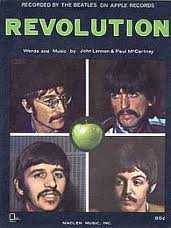 The introduction is four measures long, the first three measures taken up primarily with John on manic highly distorted guitar playing triplets, moving to a startling riff in the fourth measure to usher in the first verse that follows. Ringo joins in with a thud on snare and kick drum on the down beat of the third measure and then provides a simple snare drum fill at the end of the fourth measure as a segue into the verse. One final element not to be forgotten is the blood-curdling shriek John gives at the end of the third measure which extends throughout the fourth measure, undoubtedly shredding his vocal chords to an equal degree as he did nearly five and a half years earlier on “Twist And Shout.” The introduction is four measures long, the first three measures taken up primarily with John on manic highly distorted guitar playing triplets, moving to a startling riff in the fourth measure to usher in the first verse that follows. Ringo joins in with a thud on snare and kick drum on the down beat of the third measure and then provides a simple snare drum fill at the end of the fourth measure as a segue into the verse. One final element not to be forgotten is the blood-curdling shriek John gives at the end of the third measure which extends throughout the fourth measure, undoubtedly shredding his vocal chords to an equal degree as he did nearly five and a half years earlier on “Twist And Shout.”
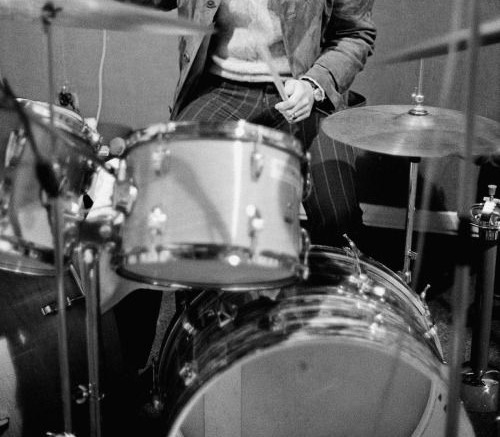 The first verse, like all the verses, is twelve measures long and is mostly in 4/4 time, the exceptions being the second and eighth measures which are in 6/4 time to allow John to stretch out his phrase “well, you know” on both occasions. The full band kicks in for this entire verse, both John and George playing electric rhythm guitar with John overdubbing another guitar on top, Paul on bass and Ringo playing a double-tracked full drum beat focusing on toms and heavy snare without the use of any cymbals. John's vocals are double-tracked sporadically, such as on the words “revolution,” “know” and “world” in the first phrase, and then on the third syllable of the word “evolution” in the second phrase with what sounds like the word “juice,” making it appear that he's singing “evo-juice-tion”! Then after he double-tracks the words “well, you know,” the chords change to move nicely into the bridge that follows. The first verse, like all the verses, is twelve measures long and is mostly in 4/4 time, the exceptions being the second and eighth measures which are in 6/4 time to allow John to stretch out his phrase “well, you know” on both occasions. The full band kicks in for this entire verse, both John and George playing electric rhythm guitar with John overdubbing another guitar on top, Paul on bass and Ringo playing a double-tracked full drum beat focusing on toms and heavy snare without the use of any cymbals. John's vocals are double-tracked sporadically, such as on the words “revolution,” “know” and “world” in the first phrase, and then on the third syllable of the word “evolution” in the second phrase with what sounds like the word “juice,” making it appear that he's singing “evo-juice-tion”! Then after he double-tracks the words “well, you know,” the chords change to move nicely into the bridge that follows.
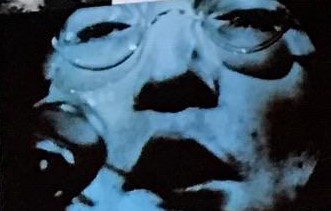 The bridges are all five measures long, all of which are in 4/4 time except for the third measure which is in 6/4. The guitars all play staccato chops on the downbeats of measures one through three and then power chords on the accents at the end of the third measure which hold out nicely into the final measures of the bridge. Paul's bass accentuates the guitar chords throughout while Ringo plays a double-tracked snare and kick drum pattern for the first three measures, heard here with handclaps, and then accents the power chords at the end of that measure with added crashing cymbals. Speaking of cymbals, Ringo's cymbal crash swells in the first measure of this bridge and then dissipates just before the second measure begins, possibly the result of the use of compression during the mixing stage. The fourth measure has Ringo thumping on the kick drum while he then plays a triplet drum fill on mostly the snare drum in the fifth measure to bring on the following chorus. As for John's vocals, his double-tracking kicks in on the words “destruction” and “count me out,” as well as the phrase that brings in the chorus, namely the falsetto “don't you know it's gonna be.” The bridges are all five measures long, all of which are in 4/4 time except for the third measure which is in 6/4. The guitars all play staccato chops on the downbeats of measures one through three and then power chords on the accents at the end of the third measure which hold out nicely into the final measures of the bridge. Paul's bass accentuates the guitar chords throughout while Ringo plays a double-tracked snare and kick drum pattern for the first three measures, heard here with handclaps, and then accents the power chords at the end of that measure with added crashing cymbals. Speaking of cymbals, Ringo's cymbal crash swells in the first measure of this bridge and then dissipates just before the second measure begins, possibly the result of the use of compression during the mixing stage. The fourth measure has Ringo thumping on the kick drum while he then plays a triplet drum fill on mostly the snare drum in the fifth measure to bring on the following chorus. As for John's vocals, his double-tracking kicks in on the words “destruction” and “count me out,” as well as the phrase that brings in the chorus, namely the falsetto “don't you know it's gonna be.”
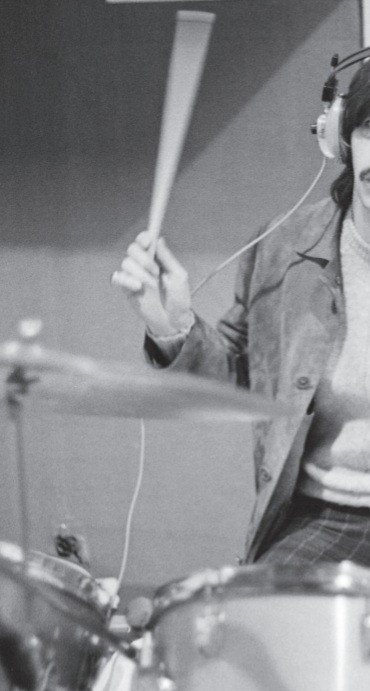 The chorus is a standard eight measures long and is fully in 4/4 time for a change. For the first six measures, three electric guitars are churning away playing various rhythm and lead patterns while the bass follows nicely and the drums plod along similarly to how they were played during the first verse. John sings his simple “all right” phrase three times, his double-tracking appearing on the word “all” the first time and then on the word “right” for the other two times. The seventh and eighth measures break the intensity as Ringo cymbal crashes an abrupt 'Beatles break' with the guitar chords and bass ringing out. In the break John performs a transitional chord-like lead guitar run while Ringo finalizes the eighth measure with another triplet pattern drum fill. The chorus is a standard eight measures long and is fully in 4/4 time for a change. For the first six measures, three electric guitars are churning away playing various rhythm and lead patterns while the bass follows nicely and the drums plod along similarly to how they were played during the first verse. John sings his simple “all right” phrase three times, his double-tracking appearing on the word “all” the first time and then on the word “right” for the other two times. The seventh and eighth measures break the intensity as Ringo cymbal crashes an abrupt 'Beatles break' with the guitar chords and bass ringing out. In the break John performs a transitional chord-like lead guitar run while Ringo finalizes the eighth measure with another triplet pattern drum fill.
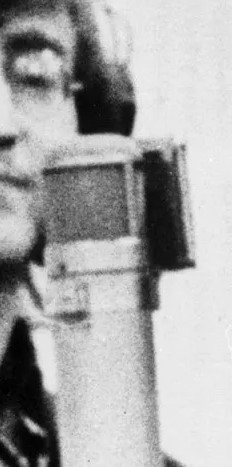 Next comes a virtual repeat of another verse, bridge and chorus, the instrumentation remaining identical to the first. John's vocal double-tracking in the verse consists of the middle syllable of the word “solution” and then “well, you know” and “love” in the first phrase, then “you ask” and “you know” in the second phrase. No double-tracked vocals can be detected in this bridge, but the second and third “all right” in the chorus that follows are double-tracked, the second occurrence being noticeably off in timing. The final two measures in this chorus have two additional elements, these being John giving out a falsetto “ooh” at the end of measure seven and a highly fuzzed additional guitar overdub which slightly bends and bleeds into the solo section that follows. Next comes a virtual repeat of another verse, bridge and chorus, the instrumentation remaining identical to the first. John's vocal double-tracking in the verse consists of the middle syllable of the word “solution” and then “well, you know” and “love” in the first phrase, then “you ask” and “you know” in the second phrase. No double-tracked vocals can be detected in this bridge, but the second and third “all right” in the chorus that follows are double-tracked, the second occurrence being noticeably off in timing. The final two measures in this chorus have two additional elements, these being John giving out a falsetto “ooh” at the end of measure seven and a highly fuzzed additional guitar overdub which slightly bends and bleeds into the solo section that follows.
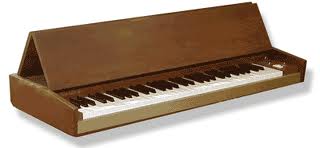 This solo section can be parsed out to be eight measures long and in 4/4 time except for the second measure which is in 6/4 as the verses are. Instrumentally, the same elements are present and played in a similar fashion as in the verses but with some added elements. Most noteworthy is the presence of Nicky Hopkins on Hohner Pianet which appears throughout this entire section of the song. He's not playing a solo per se but is vamping appropriately and heard most prominently in the first two measures, John kicking in with raunchy lead guitar work in measures three through eight which leads to a transitional climax. Another element is John 's rhythmic grunting which is heard throughout this section at various volumes. Interestingly, Ringo adds a rapid fire snare drum fill in the sixth measure followed thereafter by his usual triplet snare fill in the final measure. This solo section can be parsed out to be eight measures long and in 4/4 time except for the second measure which is in 6/4 as the verses are. Instrumentally, the same elements are present and played in a similar fashion as in the verses but with some added elements. Most noteworthy is the presence of Nicky Hopkins on Hohner Pianet which appears throughout this entire section of the song. He's not playing a solo per se but is vamping appropriately and heard most prominently in the first two measures, John kicking in with raunchy lead guitar work in measures three through eight which leads to a transitional climax. Another element is John 's rhythmic grunting which is heard throughout this section at various volumes. Interestingly, Ringo adds a rapid fire snare drum fill in the sixth measure followed thereafter by his usual triplet snare fill in the final measure.
 Next follows another verse, bridge and chorus set, not unlike the first set except for new lyrics. An overdubbed lead guitar passage is heard in the final three measures of the bridge which extends into the final chorus but is faded down and out by the end of the third measure of said chorus. Double-tracked vocals in this verse consist of the third syllable of the word “constitution” and “well, you know” in the first phrase, and the first syllable of the word “institution” in the second phrase. In the bridge, John made sure he double-tracked the word “Mao,” the rhyming word “anyhow,” and the falsetto phrase “don't you know it's gonna be.” As for the chorus, he double-tracked the first “all right,” the word “all” the second time the phrase is repeated, and the word “right” the third time the phrase is heard. The final measure of this last chorus features John's excited “All right!” as repeated seven more times in the conclusion of the song that follows. Next follows another verse, bridge and chorus set, not unlike the first set except for new lyrics. An overdubbed lead guitar passage is heard in the final three measures of the bridge which extends into the final chorus but is faded down and out by the end of the third measure of said chorus. Double-tracked vocals in this verse consist of the third syllable of the word “constitution” and “well, you know” in the first phrase, and the first syllable of the word “institution” in the second phrase. In the bridge, John made sure he double-tracked the word “Mao,” the rhyming word “anyhow,” and the falsetto phrase “don't you know it's gonna be.” As for the chorus, he double-tracked the first “all right,” the word “all” the second time the phrase is repeated, and the word “right” the third time the phrase is heard. The final measure of this last chorus features John's excited “All right!” as repeated seven more times in the conclusion of the song that follows.
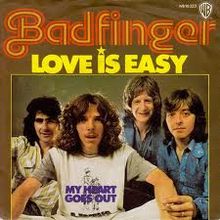 The conclusion is eight measures long and features all instrumentation as heard throughout the song as well as the return of Nicky Hopkins on electric piano playing rhythmic flourishes intended to bring the song to a climactic finish. John vibrantly repeats the phrase “All Right!” seven more times, each one accelerating in intensity until the rawness of the final one in the seventh measure. An overdubbed lead guitar passage reaches such a fever pitch in volume that it cuts in and out of the mix giving the impression that it was overloading the circuitry of the equipment, which it undoubtedly was. (Witness the solo in Badfinger's song “Love Is Easy,” which is said to have been recorded the same way as “Revolution” by Beatles producer Chris Thomas.) Ringo puts in another rapid fire snare fill at the end of the fourth measure and then brings the song to a natural conclusion within the eighth measure with the multiple distorted guitars ringing out, leaving the listener breathless. The conclusion is eight measures long and features all instrumentation as heard throughout the song as well as the return of Nicky Hopkins on electric piano playing rhythmic flourishes intended to bring the song to a climactic finish. John vibrantly repeats the phrase “All Right!” seven more times, each one accelerating in intensity until the rawness of the final one in the seventh measure. An overdubbed lead guitar passage reaches such a fever pitch in volume that it cuts in and out of the mix giving the impression that it was overloading the circuitry of the equipment, which it undoubtedly was. (Witness the solo in Badfinger's song “Love Is Easy,” which is said to have been recorded the same way as “Revolution” by Beatles producer Chris Thomas.) Ringo puts in another rapid fire snare fill at the end of the fourth measure and then brings the song to a natural conclusion within the eighth measure with the multiple distorted guitars ringing out, leaving the listener breathless.
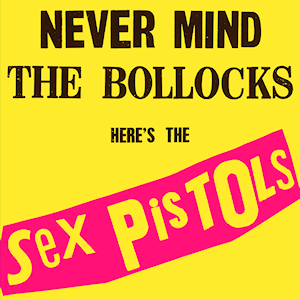 With John at the wheel, all four Beatles, along with Nicky Hopkins, performed with the utmost enthusiasm to create what is arguably the raunchiest, most ear-splitting Beatles song in their catalog. “Helter Skelter,” which was recorded approximately two months later, may have been thought of as equal to what was done here, as to a lesser degree were a couple of other heavy tracks included on the “White Album,” but “Revolution” brought this organized cacophony of sound to AM radio unlike anything heard there before. What better precursor to The Sex Pistols or Nirvana could there have been but none other than The Beatles, once again the 'pied pipers' for the future of popular music. With John at the wheel, all four Beatles, along with Nicky Hopkins, performed with the utmost enthusiasm to create what is arguably the raunchiest, most ear-splitting Beatles song in their catalog. “Helter Skelter,” which was recorded approximately two months later, may have been thought of as equal to what was done here, as to a lesser degree were a couple of other heavy tracks included on the “White Album,” but “Revolution” brought this organized cacophony of sound to AM radio unlike anything heard there before. What better precursor to The Sex Pistols or Nirvana could there have been but none other than The Beatles, once again the 'pied pipers' for the future of popular music.
American Releases
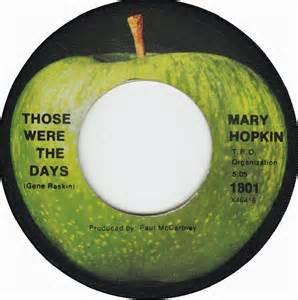 On August 26th, 1968, "Revolution" was released as the b-side of "Hey Jude," which was the very first Beatles single on their newly created Apple Records. However, The Beatles weren't actually signed to Apple Records because they were already under contract to Capitol Records in the states. That is why this single was assigned a Capitol Records number (#2276) instead of a number in the Apple 1800 series like the other Apple artists such as Mary Hopkin and Jackie Lomax. Nonetheless, most sources consider this Beatles single to be the first single release from Apple Records. While “Hey Jude” rose quickly to the #1 position on the US Billboard Hot 100 and stayed there for nine straight weeks, the world took notice of “Revolution” as well. It got enough radio airplay and attention to garner a #12 placement on the same chart, staying there for three straight weeks. On August 26th, 1968, "Revolution" was released as the b-side of "Hey Jude," which was the very first Beatles single on their newly created Apple Records. However, The Beatles weren't actually signed to Apple Records because they were already under contract to Capitol Records in the states. That is why this single was assigned a Capitol Records number (#2276) instead of a number in the Apple 1800 series like the other Apple artists such as Mary Hopkin and Jackie Lomax. Nonetheless, most sources consider this Beatles single to be the first single release from Apple Records. While “Hey Jude” rose quickly to the #1 position on the US Billboard Hot 100 and stayed there for nine straight weeks, the world took notice of “Revolution” as well. It got enough radio airplay and attention to garner a #12 placement on the same chart, staying there for three straight weeks.
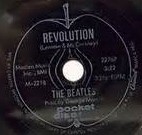 “Revolution” was also made available in a new format for 1968 called the “Pocket Disc.” These four inch flexible discs were manufactured by Americom Corporation in New York and made available to consumers either from store counter displays or vending machines for 50 cents. While it was claimed that the sound quality of these thin flexible discs were every bit as good as vinyl, the shallow grooves could not contain the same amount of audible information. This “Hey Jude / Revolution” Pocket Disc is quite collectible today. “Revolution” was also made available in a new format for 1968 called the “Pocket Disc.” These four inch flexible discs were manufactured by Americom Corporation in New York and made available to consumers either from store counter displays or vending machines for 50 cents. While it was claimed that the sound quality of these thin flexible discs were every bit as good as vinyl, the shallow grooves could not contain the same amount of audible information. This “Hey Jude / Revolution” Pocket Disc is quite collectible today.
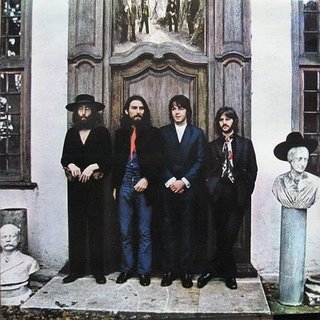 The next American release was on February 26th, 1970 on the album “Hey Jude,” which originally was titled “The Beatles Again” as the labels on the first pressings indicate. This was the first time “Revolution” was made available in stereo and was a very vibrant song to end the first side of the album. This album was made up of songs previously released as singles in America but never contained on a Capitol album, following the pattern set in the earlier Beatles years by the record label. Even though it was released while “Abbey Road” was riding high on the Billboard album chart, it still pushed up to #2 for four straight weeks. It was eventually released on compact disc on January 21st, 2014. The next American release was on February 26th, 1970 on the album “Hey Jude,” which originally was titled “The Beatles Again” as the labels on the first pressings indicate. This was the first time “Revolution” was made available in stereo and was a very vibrant song to end the first side of the album. This album was made up of songs previously released as singles in America but never contained on a Capitol album, following the pattern set in the earlier Beatles years by the record label. Even though it was released while “Abbey Road” was riding high on the Billboard album chart, it still pushed up to #2 for four straight weeks. It was eventually released on compact disc on January 21st, 2014.
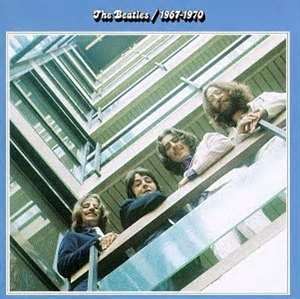 “Revolution” was a big enough sensation to be an obvious candidate for their compilation album “The Beatles/1967-1970,” aka the “Blue Album.” This double-album was released on April 2nd, 1973 and quickly reached #1 on the Billboard album chart, being replaced the following week by Paul McCartney & Wings' album “Red Rose Speedway.” On September 20th, 1993, this Beatles compilation album was first released on compact disc, a remastered version then being released on August 10th, 2010. “Revolution” was a big enough sensation to be an obvious candidate for their compilation album “The Beatles/1967-1970,” aka the “Blue Album.” This double-album was released on April 2nd, 1973 and quickly reached #1 on the Billboard album chart, being replaced the following week by Paul McCartney & Wings' album “Red Rose Speedway.” On September 20th, 1993, this Beatles compilation album was first released on compact disc, a remastered version then being released on August 10th, 2010.
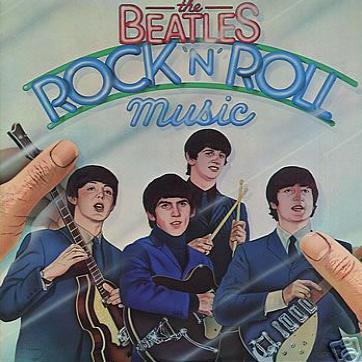 Released on June 7th, 1976, the successful double-album "Rock 'n' Roll Music" focused on the harder side of The Beatles catalog. Capitol primarily focused on songs that were not contained on either the "Red Album" or "Blue Album" from three years prior, but "Revolution" was too powerful of a rocker to not be included on this compilation album as well. George Martin was consulted regarding the preparation of this album and, with access to only the Capitol mixes, decided it was necessary to reverse the right and left channels of the original stereo mix of the song for this album. On October 27th, 1980, Capitol decided to divide the double album into two single albums for budget sales. "Rock 'n' Roll Music, Volume One" included the song. Released on June 7th, 1976, the successful double-album "Rock 'n' Roll Music" focused on the harder side of The Beatles catalog. Capitol primarily focused on songs that were not contained on either the "Red Album" or "Blue Album" from three years prior, but "Revolution" was too powerful of a rocker to not be included on this compilation album as well. George Martin was consulted regarding the preparation of this album and, with access to only the Capitol mixes, decided it was necessary to reverse the right and left channels of the original stereo mix of the song for this album. On October 27th, 1980, Capitol decided to divide the double album into two single albums for budget sales. "Rock 'n' Roll Music, Volume One" included the song.
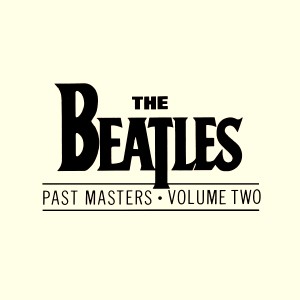 With the ushering in of the compact disc era, “Revolution” found its way onto a newly created CD entitled “Past Masters, Volume Two,” which was released on March 7th, 1988. For the vinyl release of this album, it was decided to combine both volumes of "Past Masters" to form a double-album, this being released on October 24th, 1988. The double-album concept was continued for both the CD and vinyl versions of the remastered edition of "Past Masters," the 2-CD set being released on September 9th, 2009 and the vinyl double-album coming out on November 12th, 2012. With the ushering in of the compact disc era, “Revolution” found its way onto a newly created CD entitled “Past Masters, Volume Two,” which was released on March 7th, 1988. For the vinyl release of this album, it was decided to combine both volumes of "Past Masters" to form a double-album, this being released on October 24th, 1988. The double-album concept was continued for both the CD and vinyl versions of the remastered edition of "Past Masters," the 2-CD set being released on September 9th, 2009 and the vinyl double-album coming out on November 12th, 2012.
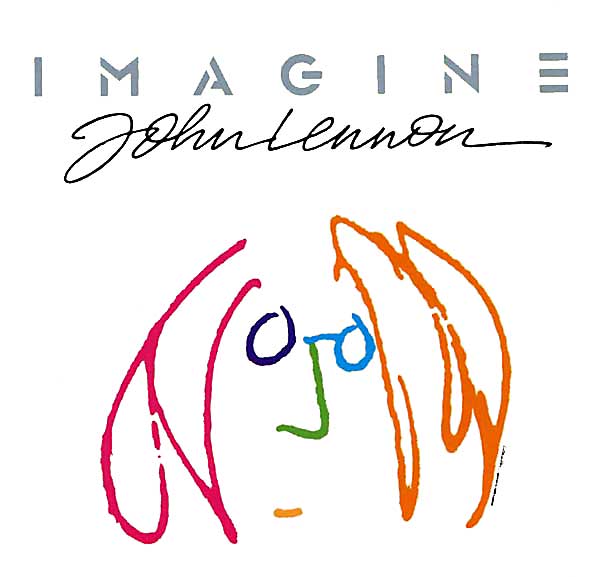 The next release of the song was actually not on a Beatles album, but on the soundtrack for the documentary film “Imagine: John Lennon.” The double album (or single CD), released on October 10th, 1988, featured highlights of his career with The Beatles as well as his solo career. The album peaked at #31 on the Billboard album chart. The next release of the song was actually not on a Beatles album, but on the soundtrack for the documentary film “Imagine: John Lennon.” The double album (or single CD), released on October 10th, 1988, featured highlights of his career with The Beatles as well as his solo career. The album peaked at #31 on the Billboard album chart.
A special reissue of the “Hey Jude / Revolution” single was released by Capitol in January of 1994 as part of their Cema Series “For Jukeboxes Only.” This release, which was reportedly cut from the original mono masters that appeared on the 1968 single, was on blue vinyl and is somewhat collectible today.
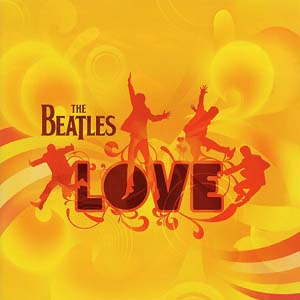 Not to be forgotten is the excellent newly stereo mixed version of “Revolution” that appears on the November 20th, 2006 released album “Love,” the creative soundtrack used in conjunction with the Cirque du Soleil show of the same name. As indicated above, the compact disc version of this album is edited down to 2:14, while the DVD and iTunes releases of this album contain the entire song in amazing stereo quality. Not to be forgotten is the excellent newly stereo mixed version of “Revolution” that appears on the November 20th, 2006 released album “Love,” the creative soundtrack used in conjunction with the Cirque du Soleil show of the same name. As indicated above, the compact disc version of this album is edited down to 2:14, while the DVD and iTunes releases of this album contain the entire song in amazing stereo quality.
 On September 9th, 2009, the CD box set "The Beatles in Mono" was released which included all of the original mono versions of the entire Bealtse catalog, "Revolution" being included on a CD set entitled "Mono Masters." The vinyl edition of this box set was first released on September 9th, 2014. On September 9th, 2009, the CD box set "The Beatles in Mono" was released which included all of the original mono versions of the entire Bealtse catalog, "Revolution" being included on a CD set entitled "Mono Masters." The vinyl edition of this box set was first released on September 9th, 2014.
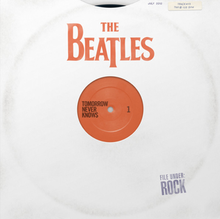 On July 24th, 2012, the iTunes Store, in partnership with EMI Records, released a Beatles compilation album entitled "Tomorrow Never Knows," the purpose of which was to highlight the group's influence on the history of rock music. The album had the approval of Paul and Ringo, as well as the board of directors for the estates of John and George, and was successful enough to peak at #24 on the Billboard album chart. "Revolution" was an obvious choice for this release. On July 24th, 2012, the iTunes Store, in partnership with EMI Records, released a Beatles compilation album entitled "Tomorrow Never Knows," the purpose of which was to highlight the group's influence on the history of rock music. The album had the approval of Paul and Ringo, as well as the board of directors for the estates of John and George, and was successful enough to peak at #24 on the Billboard album chart. "Revolution" was an obvious choice for this release.
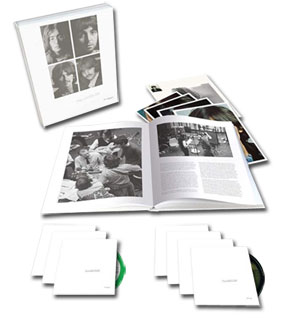 A select portion of the newly discovered rehearsal of "Revolution" recorded on July 9th, 1968 was officially released on November 9th, 2018 on the box set of the "'White Album' 50th Anniversary Super Deluxe Edition." Also included therein is an early take of the song (mislabeled as "Take 14 - Instrumental backing track") as well as the original Esher demo of the song as recorded on May 28th, 1968, the latter song also appearing on the "Deluxe" edition, which was made available in a 3CD set and a limited edition 180-gram 4LP vinyl set. A select portion of the newly discovered rehearsal of "Revolution" recorded on July 9th, 1968 was officially released on November 9th, 2018 on the box set of the "'White Album' 50th Anniversary Super Deluxe Edition." Also included therein is an early take of the song (mislabeled as "Take 14 - Instrumental backing track") as well as the original Esher demo of the song as recorded on May 28th, 1968, the latter song also appearing on the "Deluxe" edition, which was made available in a 3CD set and a limited edition 180-gram 4LP vinyl set.
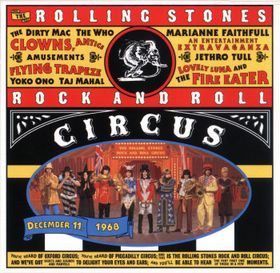 On June 7th, 2019, a new remasterd “Rock And Roll Circus” box set (4 CD and 3 LP vinyl) was released which featured, as described above, John with his quickly assembled make-shift band The Dirty Mac rehearsing "Revolution.” While this set was released without too much fanfare, most Beatles fans may not even know of its availability, which is a shame since this rough runthrough of the song by Lennon, Eric Clapton, Keith Richards and Mitch Mitchel was a once in a lifetime experience. On June 7th, 2019, a new remasterd “Rock And Roll Circus” box set (4 CD and 3 LP vinyl) was released which featured, as described above, John with his quickly assembled make-shift band The Dirty Mac rehearsing "Revolution.” While this set was released without too much fanfare, most Beatles fans may not even know of its availability, which is a shame since this rough runthrough of the song by Lennon, Eric Clapton, Keith Richards and Mitch Mitchel was a once in a lifetime experience.
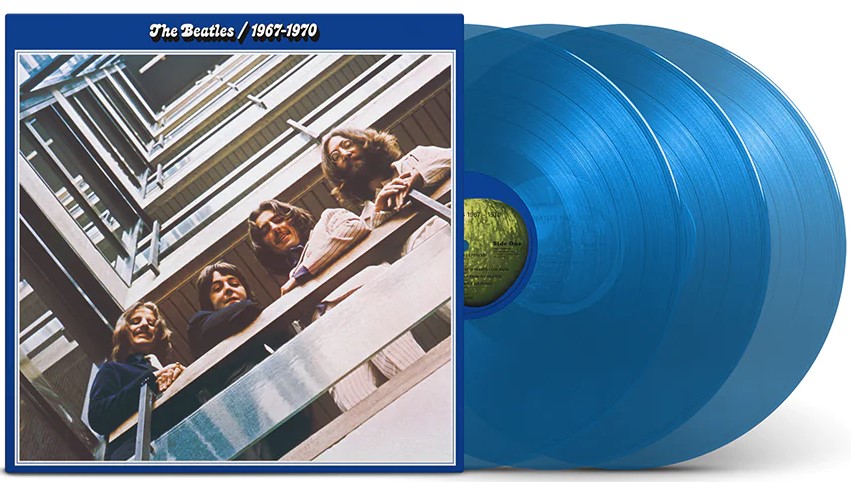 A 50th Anniversay edition of the compilation album "The Beatles / 1967 - 1970" (aka "The Blue Album") was released on November 10th, 2023. This expanded release included 12 additional songs for a total of 38 tracks, including the new mix of "Revolution" detailed above, and was made available as a double CD and as a triple vinyl release on both black and blue vinyl. A 50th Anniversay edition of the compilation album "The Beatles / 1967 - 1970" (aka "The Blue Album") was released on November 10th, 2023. This expanded release included 12 additional songs for a total of 38 tracks, including the new mix of "Revolution" detailed above, and was made available as a double CD and as a triple vinyl release on both black and blue vinyl.
Live Performances
Neither The Beatles collectively nor as individual performers have ever performed "Revolution" on a live stage. However, the group did film two promo clips of the song on September 4th, 1968 at Twickenham Film Studios for use in promoting what was then their current single.
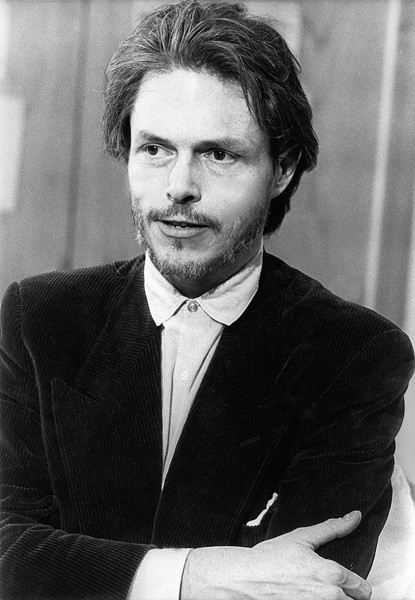 The Beatles arrived at Stage One at 1:30 pm to film throughout the afternoon and evening, shooting three takes of “Hey Jude” and then, after a wardrobe change, two takes of “Revolution.” Michael Lindsay-Hogg was the director, having previously worked with the band on their promo films for “Paperback Writer” and “Rain,” not to mention his future involvement in directing their “Let It Be” movie a few months later. The Beatles arrived at Stage One at 1:30 pm to film throughout the afternoon and evening, shooting three takes of “Hey Jude” and then, after a wardrobe change, two takes of “Revolution.” Michael Lindsay-Hogg was the director, having previously worked with the band on their promo films for “Paperback Writer” and “Rain,” not to mention his future involvement in directing their “Let It Be” movie a few months later.
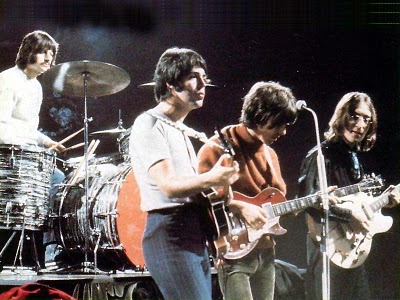 Both promo films were nearly identical except for lighting differences, these being straightforward performances with Paul, George and John in front with guitars and Ringo in back of them on a riser. As detailed above, a backing track of the official recording without vocals was mimed by the group while live microphones allowed them to perform their own vocals in order to fool the British Musicians' Union into believing this was a fully live performance. Both promo films were nearly identical except for lighting differences, these being straightforward performances with Paul, George and John in front with guitars and Ringo in back of them on a riser. As detailed above, a backing track of the official recording without vocals was mimed by the group while live microphones allowed them to perform their own vocals in order to fool the British Musicians' Union into believing this was a fully live performance.
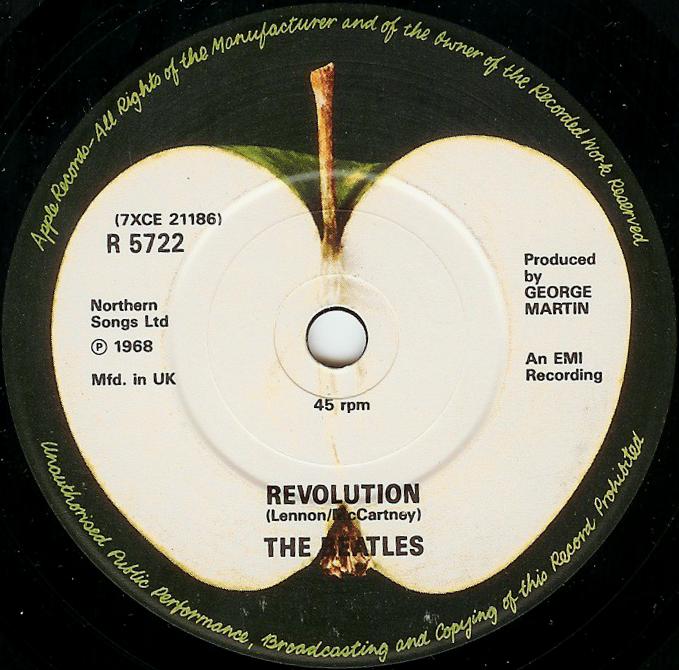 Interestingly, the released film contains what many may view as a combination of both the released single of “Revolution” and the album track “Revolution 1.” It is viewed this way because John sang “count me out...in” at the end of the first verse and Paul and George provided “shoo-be-doo-whop-bow” backing vocals as heard on “Revolution 1.” Other noticeable details include George mouthing to Paul away from the microphone what appears to be either “John looks like sh*t” or “John smells like sh*t” just after the first verse begins. Also, we can easily see in this clip that Paul performs the beginning scream instead of John who, as detailed above, performed it himself on the original recording during a vocal double-tracking overdub. And if the Musicians' Union was really paying attention, traces of John's prerecorded vocal from the original session can easily be detected at times, especially the final screamed “All Right!” at the end of the song. Interestingly, the released film contains what many may view as a combination of both the released single of “Revolution” and the album track “Revolution 1.” It is viewed this way because John sang “count me out...in” at the end of the first verse and Paul and George provided “shoo-be-doo-whop-bow” backing vocals as heard on “Revolution 1.” Other noticeable details include George mouthing to Paul away from the microphone what appears to be either “John looks like sh*t” or “John smells like sh*t” just after the first verse begins. Also, we can easily see in this clip that Paul performs the beginning scream instead of John who, as detailed above, performed it himself on the original recording during a vocal double-tracking overdub. And if the Musicians' Union was really paying attention, traces of John's prerecorded vocal from the original session can easily be detected at times, especially the final screamed “All Right!” at the end of the song.
This promo film was only shown once in Britain, on the September 19th, 1968 edition of “Top Of The Pops,” while the premier of this clip in America was on the October 13th, 1968 episode of The Smothers Brothers Comedy Hour.
Conclusion
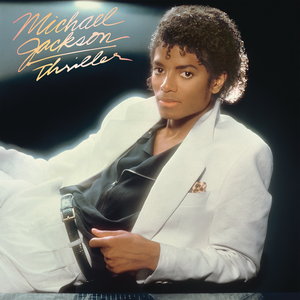 John Lennon's intent for his song "Revolution" was obvious, but seven years after his untimely death, Yoko Ono gave wholehearted consent to Nike to use the song to sell their running shoes. The company spent $500,000 in 1987 to use the song in a television commercial, the money being split between Capitol Records and Michael Jackson, who owned the song at the time. The three living Beatles jointly filed a lawsuit in July of 1987, which was settled out of court in November of 1989, the terms of the settlement being kept secret. John Lennon's intent for his song "Revolution" was obvious, but seven years after his untimely death, Yoko Ono gave wholehearted consent to Nike to use the song to sell their running shoes. The company spent $500,000 in 1987 to use the song in a television commercial, the money being split between Capitol Records and Michael Jackson, who owned the song at the time. The three living Beatles jointly filed a lawsuit in July of 1987, which was settled out of court in November of 1989, the terms of the settlement being kept secret.
 "If it's allowed to happen, every Beatles song ever recorded is going to be advertising women's underwear and sausages," explained George Harrison in 1987. "We've got to put a stop to it in order to set a precedent. Otherwise it's going to be a free-for-all. It's one thing when you're dead, but we're still around! They don't have any respect for the fact that we wrote and recorded those songs, and it was our lives." The precedent may have been set back in 1989, but Beatles music is still heard to this day in American television commercials, later examples being "Hello Goodbye" for Target stores and "All You Need Is Love" for Blackberry. We all may have to resign ourselves to the opinion Yoko had back in 1987: that the use of Beatles songs in advertising is making their music "accessible to a new generation." And I think we can all agree that this is something we'd like to see happen. "If it's allowed to happen, every Beatles song ever recorded is going to be advertising women's underwear and sausages," explained George Harrison in 1987. "We've got to put a stop to it in order to set a precedent. Otherwise it's going to be a free-for-all. It's one thing when you're dead, but we're still around! They don't have any respect for the fact that we wrote and recorded those songs, and it was our lives." The precedent may have been set back in 1989, but Beatles music is still heard to this day in American television commercials, later examples being "Hello Goodbye" for Target stores and "All You Need Is Love" for Blackberry. We all may have to resign ourselves to the opinion Yoko had back in 1987: that the use of Beatles songs in advertising is making their music "accessible to a new generation." And I think we can all agree that this is something we'd like to see happen.
Song Summary
“Revolution”
Written by: John Lennon / Paul McCartney
- Song Written: February to May 30, 1968
- Song Recorded: July 10, 11 and 13, 1968
- First US Release Date: August 26, 1968
- US Single Release: Apple #2276 (b-side to “Hey Jude”)
- Highest Chart Position: #12
- First US Album Release: Apple #SW-385 “Hey Jude” (Apple #SO-385 “The Beatles Again")
- British Album Release: Apple #SKBO-3404 “The Beatles / 1967-1970”
- Length: 3:22
- Key: B major
- Producer: George Martin
- Engineer: Geoff Emerick, Richard Lush, Phil McDonald
Instrumentation (most likely):
- John Lennon - Lead Vocals, Lead and Rhythm Guitar (1965 Epiphone ES-230TD Casino), handclaps
- Paul McCartney - Bass (1964 Rickenbacker 4001 S ), handclaps
- George Harrison - Rhythm Guitar (1961 Fender Sonic Blue Stratocaster), handclaps
- Ringo Starr - Drums (1964 Ludwig Super Classic Black Oyster Pearl), handclaps
- Nicky Hopkins - Electric Piano (1964 Hohner Pianet C)
Written and compiled by Dave Rybaczewski
|
IF YOU WOULD LIKE TO MAKE A DONATION TO KEEP THIS WEBSITE UP AND RUNNING, PLEASE CLICK BELOW!
Sign Up Below for our MONTHLY BEATLES TRIVIA QUIZ!
|